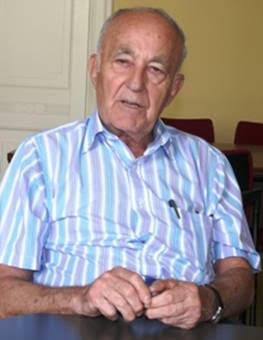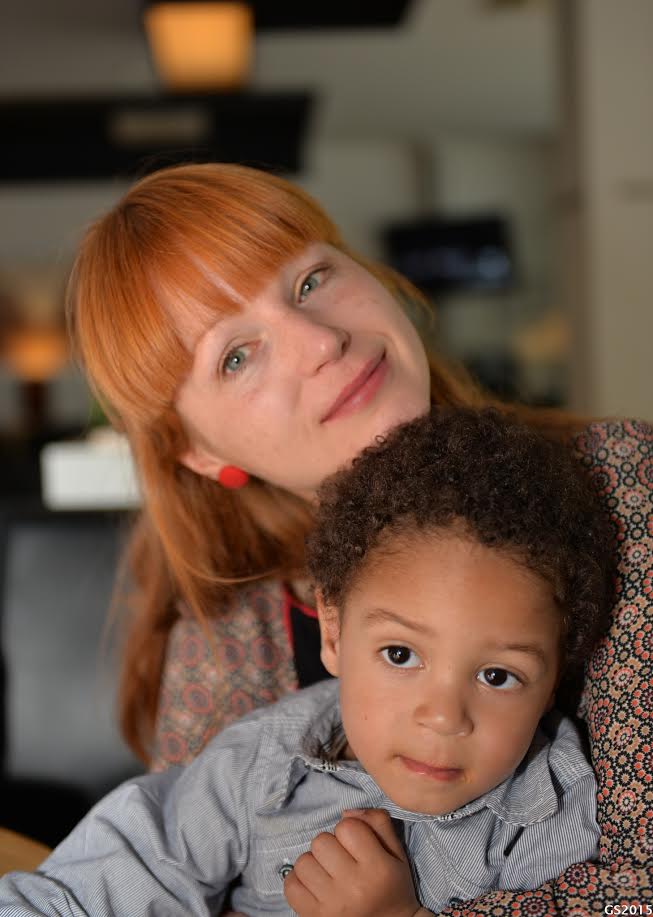
THE VOICE OF INTERNATIONAL LITHUANIA
|
VilNews has its own Google archive! Type a word in the above search box to find any article.
You can also follow us on Facebook. We have two different pages. Click to open and join.
|
Author Archive
- Posted by - (0) Comment
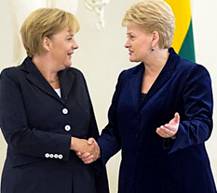
Stronger German-Lithuanian ties
President Dalia Grybauskaite met with members of the German Bundestag’s Parliamentary Friendship Group for Relations with the Baltic States in a meeting that focused on issues relevant for the whole of Europe and key priorities of Lithuania’s upcoming presidency of the Council of the European Union, reports ELTA.
“Germany is a very important partner for Lithuania and for our entire region. The dialogue of our countries has notably intensified over the past few years. Germany’s support to our aspirations for energy independence is particularly significant for Lithuania. Lithuania also appreciates Germany’s support in preparations for the presidency of the EU Council,” the president said.
Read more...
- Bookmark :
- Digg
- del.icio.us
- Stumbleupon
- Redit it
- Posted by - (1) Comment
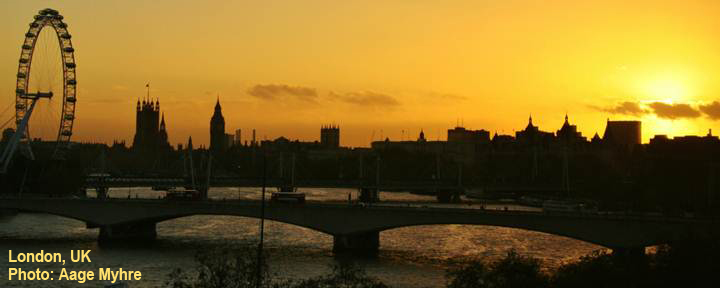






EXPLORING EUROPE (4 of 10)
From Strasbourg to
Benelux and England
Tour guide, writer and photographer: Aage Myhre
aage.myhre@VilNews.com
|
VilNews is on its way around Europe!
|
|
|
Strasbourg and Alsace |

Strasbourg centre is built on an island. Fantastic waterways, excellent riverside restaurants...
Photo: Aage Myhre

Getting to Strasbourg is for me like coming home. It was here I lived one year to study architectural psychology in the 1980s at Université Louis Pasteur, after my architect studies back home in Norway. Strasbourg is an architectural gem, and a city full of life, sounds, smells ... Fantastic food, good wine, good beer. The best of German and French culture in perfect harmony. This is a city I love!
Strasbourg is the capital and principal city of the Alsace region in eastern France and is the official seat of the European Parliament. Located close to the border with Germany, it is the capital of the Bas-Rhin département. The city and the region of Alsace are historically German-speaking, explaining the city's Germanic name. In 2006, the city proper had 272,975 inhabitants and its urban community 467,375 inhabitants. With 638,670 inhabitants in 2006, Strasbourg's metropolitan area (aire urbaine) (only the part of the metropolitan area on French territory) is the ninth largest in France. The transnational Eurodistrict Strasbourg-Ortenau had a population of 884,988 inhabitants in 2008.
Strasbourg is the seat of several European institutions, such as the Council of Europe (with its European Court of Human Rights, its European Directorate for the Quality of Medicines and its European Audiovisual Observatory) and the Eurocorps, as well as the European Parliament and the European Ombudsman of the European Union. The city is the seat of the Central Commission for Navigation on the Rhine.
Strasbourg's historic city centre, the Grande Île (Grand Island), was classified a World Heritage site by UNESCO in 1988, the first time such an honour was placed on an entire city centre. Strasbourg is fused into the Franco-German culture and although violently disputed throughout history, has been a bridge of unity between France and Germany for centuries, especially through the University of Strasbourg, currently the largest in France, and the coexistence of Catholic and Protestant culture.
Economically, Strasbourg is an important centre of manufacturing and engineering, as well as of road, rail, and river communications. The port of Strasbourg is the second largest on the Rhine after Duisburg, Germany. In terms of city rankings, Strasbourg has been ranked third in France and 18th globally for innovation.
The Strasbourg Cathedral is 142 m high


Strasbourg Cathedral or the Cathedral of Our Lady of Strasbourg is a Roman Catholic cathedral. Although considerable parts of it are still in Romanesque architecture, it is widely considered to be among the finest examples of high, or late, Gothic architecture. Erwin von Steinbach is credited for major contributions from 1277 to his death in 1318. At 142 metres (466 feet), it was the world's tallest building from 1647 to 1874, when it was surpassed by St. Nikolai's Church, Hamburg. Today it is the sixth-tallest church in the world. Described by Victor Hugo as a "gigantic and delicate marvel", and by Goethe as a "sublimely towering, wide-spreading tree of God", the cathedral is visible far across the plains of Alsace and can be seen from as far off as the Vosges Mountains or the Black Forest on the other side of the Rhine. Sandstone from the Vosges used in construction gives the cathedral its characteristic pink hue.
The European Parliament is situated in Strasbourg
|
|
|
|
|
Strasbourg is the official seat of the European Parliament. The institution is legally bound to meet there twelve sessions a year lasting about four days each. Other work takes place in Brussels and Luxembourg City. Also all votes of the European Parliament must take place in Strasbourg. "Additional" sessions and committees take place in Brussels. Although de facto a majority of the Parliament's work is now geared to its Brussels site, but it is legally bound to keep Strasbourg as its official home. The Parliament's buildings are located in the Quartier Européen (European Quarter) of the city, which it shares with other European organisations which are separate from the European Union's. Previously the Parliament used to share the same assembly room as the Council of Europe. Today, the principal building is the Louise Weiss building (left), inaugurated in 1999. |
|
|
|
Lithuanian members in the European Parliament – they are there for you!
|
Laima Liucija ANDRIKIENĖ |
|
|
Zigmantas BALČYTIS |
|
|
Vilija BLINKEVIČIŪTĖ |
|
|
Leonidas DONSKIS |
|
|
Juozas IMBRASAS |
|
|
Vytautas LANDSBERGIS |
|
|
Radvilė MORKŪNAITĖ-MIKULĖNIENĖ |
|
|
Rolandas PAKSAS |
|
|
Justas Vincas PALECKIS |
|
|
Algirdas SAUDARGAS |
|
|
Valdemar TOMAŠEVSKI |
|
|
|
Viktor USPASKICH |
Alsace – the land of amazingly aromatic white wines...
The eastern side of the river Rhine south of Strasbourg is German territory. On the western side lies Alsace. My favourite town here is Riquewihr, a romantic little medieval town at the foothills of the Vosges Mountains. This is the village of wine. Not far away are the picturesque towns of Colmar, Ribeauvillé, Hunawihr, Eguisheim and Kaysersberg. Alsace has changed between being German and French five times since the 1800s. The unique combination of history, culture, nature, food and wine makes Alsace one of Europe's most attractive destinations.
The name "Alsace" can be traced back to the Old High German Ali-saz or Elisaz, meaning "foreign domain". An alternative explanation derives it from a Germanic Ell-sass, meaning "seated on the Ill", a river in Alsace. The region was historically part of the Holy Roman Empire. It was gradually annexed by France in the 17th century under kings Louis XIII and Louis XIV and made one of the provinces of France. Alsace is frequently mentioned in conjunction with Lorraine, because German possession of parts of these two régions (as the imperial province Alsace-Lorraine, 1871–1918) was contested in the 19th and 20th centuries, during which Alsace changed hands four times between France and Germany in 75 years. Although the historical language of Alsace is Alsatian, today all Alsatians speak French, the official language of France. About 39% of the adult population, and probably less than 10% of the children, are fluent in Alsatian. There is therefore a substantial bilingual population in contemporary Alsace.
The fantastic Alsace wines, which for historical reasons have a strong Germanic influence, are produced under three different Appellations d'Origine Contrôlées (AOCs): Alsace AOC for white, rosé and red wines, Alsace Grand Cru AOC for white wines from certain classified vineyards and Crémant d'Alsace AOC for sparkling wines. Both dry and sweet white wines are produced, and are often made from aromatic grapes varieties. Along with Austria and Germany, it produces some of the most noted dry Rieslings in the world, but on the export market, Alsace is perhaps even more noted for highly aromatic Gewürztraminer wines.
Riquewihr is the most romantic...


The wine village Riquewihr is the most romantic medieval city in Alsace, hidden among vineyards and the Vosges mountains. Riquewihr looks today more or less as it did in the 16th century.
|
Want to get a taste of Alsace in Vilnius?
|
|
From Choucroute to Madame Tussauds Place Gutenberg is one of my favourite squares in Strasbourg. Here I sit a beautiful autumn day, behind the glass windows of one of the many restaurants around the square. I eat ‘Choucroute (sauerkraut)', an Alsatian specialty consisting of salt pork, sausages, cabbage and potatoes. With a lot of mustard – and a large tankard of beer from the Kronenbourg brewery in the city outskirts, established in 1664. Johann Gutenberg (1398-1468), the man who is credited with the invention of the printing art, lived here in Strasbourg for 10 years. But his first printing press he built after moving from here, back to his hometown Mainz in Germany. Without Gutenberg, Martin Luther hardly been able to implement his reformation plans 150 years later. At least not with such far-reaching effects. |
|
|
|
I had long planned a journey to England. So here I sit. Reading. I find that the very symbol of London, wax queen Marie Tussaud (1761-1850) was born under the name Anna Maria Grosholtz here in Strasbourg. Soon I follow in her footsteps to London where her wax museum had its modest beginnings in 1835. Fun to drive on the other side of the road, I think when we drive up from the ferry port of Dover. We come to London, the city you simply can never get tired of. We visit Cambridge and Oxford. Seeing two of theworld's leading student cities. Watching a student rowing competition. Proceed to the 'Lake District' and to Liverpool. Green, rolling hills outside the car windows. We like the English. But not their food so much. |
|
|
|
Trier – where witches were burned
|
|
|
A common witch-hunting method was ‘swimming’ or ‘ducking’, whereby the accused was tied hand and foot and immersed in deep water. If the accused witch floated, the water (God’s creature) had rejected her and she was deemed guilty; if she sank (and drowned), she was deemed innocent. The accused could also be pricked all over with a sharp instrument (known as “pricking”) in the search for insensitive spots where the Devil had (visibly or invisibly) marked them. Other, more traditional, tortures were also used to elicit confessions and accusations against accomplices, including thumbscrews, leg vices, whipping stocks with iron spikes, scalding lime baths, prayer stools furnished with sharp pegs, racks, and the strappado (hoisting on a pulley to pull the arms from the sockets).Execution by burning, especially the particular form commonly called “burning at the stake” in which the condemned were bound to a large stake surrounded by burning faggots of wood, had a long history as a method of punishment for crimes such as treason and heresy. It was also used as a punishment for witchcraft during this period, although it was actually less common than hanging, pressing or drowning.
|
|
||
The Witch trials of Trier in Germany in the years from 1581 to 1593 was the perhaps biggest witch trial in Europe. The persecutions started in the diocese of Trier in 1581 and reached the city itself in 1587, where it was to lead to the death of about three hundred and sixty eight people, and was as such the perhaps biggest mass-execution in Europe in peace time. This counts only the executed within the city itself, and the real number of executed, counting also the executed in the entire witch hunts within the diocese as a whole, was thereby even larger. The exact number of executed have never been established; 1000 in total have been suggested but not confirmed.
Trier, today a beautiful city in western Germany was historically called in English Treves. The city is located on the banks of the Moselle. It is the oldest city in Germany, founded in or before 16 BC. Trier lies in a valley between low vine-covered hills of ruddy sandstone in the west of the state of Rhineland-Palatinate, near the border with Luxembourg and within the important Mosel wine region.

|
|
Luxembourg – richest in Europe |
Luxembourg is by far the richest country in the European Union in terms of gross domestic product per capita, five times more affluent than Lithuania.
The European Union's statistics office Eurostat says GDP per capita measured in purchasing power standard (PPS) was 283 in Luxembourg in 2010, against the euro zone average of 108 and 58 for Lithuania.
The wealth of Luxembourg is partly due to the large number of people from neighbouring France, Germany and Belgium who work, but do not live in Luxembourg, therefore contributing to GDP but not being counted for the division of the wealth. The Netherlands was the second richest country in the EU, with GDP per capita less than half of Luxembourg's at 134 PPS. Denmark and Austria came in third with 127 PPS.
Central and eastern European countries remained at the bottom of the wealth table -- Romania was second poorest with 45 PPS, Latvia third from the bottom with 52, Lithuania fourth with 58 and the region's biggest country, Poland, fifth poorest with 62 PPS per capita.
GDP per capita in countries outside the EU: United States - 146 PPS, Switzerland - 146 PPS, Norway - 181 PPS.

Luxembourg City.
Photo: Wikipedia.
Luxembourg is a landlocked country, bordered by Belgium, France, and Germany. It has two principal regions: the Oesling in the North as part of the Ardennes massif, and the Gutland ("good country") in the south. Luxembourg has a population of over half a million people in an area of approximately 2,586 square kilometres (998 sq mi). A representative democracy with a constitutional monarch, it is ruled by a grand duke. It is now the world's only remaining sovereign grand duchy. The country has a highly developed economy, with the world's highest GDP (nominal) per capita according to the IMF. Its historic and strategic importance dates back to its founding as a Roman era fortress site and Frankish count's castle site in the Early Middle Ages. It was an important bastion along the Spanish Road when Spain was the principal European power influencing the whole western hemisphere and beyond in the 16th–17th centuries.
Luxembourg is a member of the European Union, NATO, OECD, the United Nations, and Benelux, reflecting the political consensus in favour of economic, political, and military integration. The city of Luxembourg, the largest and capital city, is the seat of several institutions and agencies of the EU.
Luxembourg culture is a mix of Romance Europe and Germanic Europe, borrowing customs from each of the distinct traditions. Luxembourg is a trilingual country; German, French and Luxembourgish are official languages. Although a secular state, Luxembourg is predominantly Roman Catholic.
|
|
The sub-marine Netherlands |
NETHERLAND > Nether – Land, Nether = Neder (Dutch) = Low, Land = Land (Dutch) = Land; = LOWLANDS

Photo: http://www.uwgroup.org/netherlands
The Netherlands is a constituent country of the Kingdom of the Netherlands, located mainly in Europe and with several islands in the Caribbean. The country capital is Amsterdam and the seat of government is The Hague. The Netherlands in its entirety is often referred to as Holland, although North and South Holland are actually only two of its twelve provinces.
The Netherlands is a geographically low-lying country, with about 25% of its area and 21% of its population located below sea level, and 50% of its land lying less than one metre above sea level. This distinct feature contributes to the country's name in many other European languages (e.g. German: Niederlande, French: Les Pays-Bas, Italian: Paesi Bassi and Spanish: Países Bajos, literally mean "(The) Low Countries"). Significant land area has been gained through land reclamation and preserved through an elaborate system of polders and dikes. Much of the Netherlands is formed by the estuary of three important European rivers, which together with their distributaries form the Rhine-Meuse-Scheldt delta. Most of the country is very flat, with the exception of foothills in the far southeast and several low-hill ranges in the central parts.
The Netherlands was one of the first countries to have an elected parliament. Among other affiliations the country is a founding member of the EU, NATO, OECD and WTO. With Belgium and Luxembourg it forms the Benelux economic union. The country is host to the Organization for the Prohibition of Chemical Weapons and five international courts: the Permanent Court of Arbitration, the International Court of Justice, the International Criminal Tribunal for the Former Yugoslavia, the International Criminal Court and the Special Tribunal for Lebanon. The first four are situated in The Hague as is the EU's criminal intelligence agency Europol and judicial co-operation agency Eurojust. This has led to the city being dubbed "the world's legal capital".
Maastricht in southern Netherlands – birthplace of EU and EURO...
|
|
The Maastricht Treaty (formally, the Treaty on European Union or TEU) was signed on 7 February 1992 by the members of the European Community in Maastricht, Netherlands. On 9–10 December 1991, the same city hosted the European Council which drafted the treaty. Upon its entry into force on 1 November 1993 during the Delors Commission, it created the European Union and led to the creation of the single European currency, the euro. Lithuania originally set 1 January 2007 as the target date for joining the euro, as per the Maastricht Treaty, but the application was rejected by the European Commission because inflation was slightly higher (0.1%) than the permitted maximum. Lithuania has later expressed interest in a suggestion from the IMF that countries who aren't able to meet the Maastricht criteria should be able to "partially adopt" the euro, using the currency but not getting a seat at the European Central Bank. |
Amsterdam – canals and red lights…

Photo: http://www.roamintl.com
Amsterdam is an amazing city, filled with impressive architecture and beautiful canals that meander throughout the city. This is the capital of the Netherlands, and is a very popular travel destination for tourists from all over the world. There is literally something for every type of traveller, whether they may have a preference for history and culture, a vibrant night life, or simply the calming charm of an old European city. Amsterdam is the largest city in Netherlands and is considered to be the creative and cultural centre of this region of Europe.
Amsterdam has a population of 783,364 within city limits, an urban population of 1,209,419 and a metropolitan population of 2,158,592. The city is in the province of North Holland in the west of the country. It comprises the northern part of the Randstad, one of the larger conurbations in Europe, with a population of approximately 7 million. Its name is derived from Amstelredamme, indicative of the city's origin: a dam in the river Amstel. Settled as a small fishing village in the late 12th century, Amsterdam became one of the most important ports in the world during the Dutch Golden Age, a result of its innovative developments in trade. During that time, the city was the leading center for finance and diamonds. The Amsterdam Stock Exchange, the oldest stock exchange in the world, is located in the city center. Amsterdam's main attractions, including its historic canals, the Rijksmuseum, the Van Gogh Museum, Stedelijk Museum, Hermitage Amsterdam, Anne Frank House, Amsterdam Museum, its red-light district, and its many cannabis coffee shops draw more than 3.66 million international visitors annually.
Rotterdam – Europe’s largest port
Rotterdam is the second-largest city in the Netherlands and one of the largest ports in the world. Starting as a dam on the Rotte river, built in 1270, Rotterdam has grown into a major international commercial centre. Its strategic location at the Rhine-Meuse-Scheldt delta on the North Sea and at the heart of a massive rail, road, air and inland waterway distribution system extending throughout Europe deliver the reason that Rotterdam is often called the Gateway to Europe.
Located in the Province of South Holland, Rotterdam is found in the west of the Netherlands and at the south end of the Randstad. The population of the city proper was 616,003 in November 2011. The population of the greater Rotterdam area, called "Rotterdam-Rijnmond" or just "Rijnmond", is around 1.3 million people. Rotterdam is one of Europe's most vibrant and multicultural cities. It is known for its university (Erasmus), its cutting-edge architecture, and lively cultural life. A striking riverside setting, Rotterdam's maritime heritage and the Rotterdam Blitz should also be added to the list.
Along the centre of Rotterdam, one can experience the thriving river with lots of traffic, a freeway on water if you wish, connecting its huge, modern port with the hinterland of Europe. The largest port in Europe and still one of the busiest ports in the world, the port of Rotterdam was the world's busiest port from 1962 to 2004, at which point it was surpassed by Shanghai. Rotterdam's commercial and strategic importance is based on its location near the mouth of the Nieuwe Maas (New Meuse), one of the channels in the delta formed by the Rhine and Meuse on the North Sea. These rivers lead directly into the centre of Europe, including the industrial Ruhr region.

Rotterdam is famous for its innovative architecture. Its impressive skyline can be seen from afar, enhancing the city’s imposing appearance characterised by such landmarks as the Euromast observation tower and the swan-like curve of the Erasmus Bridge. Photo: www.trendcocktailcom
|
Erasmus of Rotterdam (1466 – 1536) is quoted as stating; “I congratulate this nation [Lithuania] which now, in sciences, jurisprudence, morals, and religion, and in all that separates us from barbarism, is so flourishing that it can rival the first and most glorious of nations.” Erasmus, a.k.a. Desiderius Erasmus of Rotterdam, (1466 -1536) was a Dutch humanist and theologian. He was born Geert Geertsen in Rotterdam, the Netherlands. Erasmus died in 1536 in Basel, Switzerland. One of the most famous and amusing quotes from the noted scholar and translator Erasmus was, "When I get a little money I buy books; and if any is left I buy food and clothes." The Erasmus Programme (EuRopean Community Action Scheme for the Mobility of University Students), a.k.a. Erasmus Project is a European Union (EU) student exchange programme established in 1987. It forms a major part of the EU Lifelong Learning Programme 2007–2013, and is the operational framework for the European Commission's initiatives in higher education.
|
|
The Hague – the city of justice

Photo: http://newspaper.li/the-hague/
The Hague is the capital city of the province of South Holland in the Netherlands. With a population of 500,000 inhabitants it is the third largest city of the Netherlands. The Hague is the seat of the Dutch government and parliament, the Supreme Court, and the Council of State, but the city is not the capital of the Netherlands which constitutionally is Amsterdam. Queen Beatrix of the Netherlands lives at Huis ten Bosch and works at Noordeinde Palace in The Hague. All foreign embassies in the Netherlands and 150 international organisations are located in the city, including the International Court of Justice and the International Criminal Court, which makes The Hague one of the major cities hosting the United Nations, along with New York, Vienna and Geneva.
The Hague International Criminal Tribunal for the former Yugoslavia.
|
Radovan Karadžić (born 1945) is a former Bosnian Serb politician. He was detained in the United Nations Detention Unit of Scheveningen, accused of war crimes committed against Bosnian Muslims and Bosnian Croats during the Siege of Sarajevo, as well as ordering the Srebrenica massacre. He was a fugitive from 1996 until July 2008 after having been indicted for war crimes by the International Criminal Tribunal for the former Yugoslavia. The indictment concluded there were reasonable grounds for believing he committed war crimes, including genocide against Bosnian Muslim and Bosnian Croat civilians during the Bosnian War (1992–95). While a fugitive he worked at a private clinic in Belgrade specialising in alternative medicine and psychology under the alias Dr. Dragan David Dabić. He was arrested in Belgrade on 21 July 2008 and brought before Belgrade’s War Crimes Court a few days later. He was extradited to The Hague, and is in the custody of the International Criminal Tribunal for the former Yugoslavia. In August 2008 Karadžić claimed there is a conspiracy against him and refused to enter a plea, therefore the court entered a plea of not guilty on his behalf to all 11 charges. He called the tribunal, chaired by Scottish judge Iain Bonomy, a "court of NATO" disguised as a court of the international community. In 2009, Karadžić filed a Motion challenging the legal validity and legitimacy of the tribunal, claiming that "the UN Security Council lacked the power to establish the ICTY, violated agreements under international law in so doing, and delegated non-existent legislative powers to the ICTY", to which the Prosecution response was that "The Appeals Chamber has already determined the validity of the Tribunal’s creation in previous decisions which constitute established precedent on this issue", therefore dismissing the Motion.
|
|
|
|
Belgium – home of EU and NATO |

Prince Lorenz of Belgium, Princess Astrid of Belgium, Queen Fabiola of Belgium, Queen Paola of Belgium, King Albert of Belgium, Prince Philippe of Belgium, Princess Mathilde of Belgium, Princess Claire of Belgium and Prince Laurent of Belgium pose in front of a Christmas tree at the Royal Palace on December 16, 2009 in Brussels, Belgium. 15 December 2009 - Photo by Mark Renders/Getty Images Europe.
Belgium, officially the Kingdom of Belgium, is a federal state in Western Europe. It is a founding member of the European Union and hosts the EU's headquarters, and those of several other major international organisations such as NATO.
Belgium covers an area of 30,528 square kilometres (11,787 sq mi), and it has a population of about 11 million people. Straddling the cultural boundary between Germanic and Latin Europe, Belgium is home to two main linguistic groups, the Dutch-speakers, mostly Flemish (about 60%), and the French-speakers, mostly Walloons (about 40%), plus a small group of German-speakers. Belgium's two largest regions are the Dutch-speaking region of Flanders in the north and the French-speaking southern region of Wallonia. The Brussels-Capital Region, officially bilingual, is a mostly French-speaking enclave within the Flemish Region. A German-speaking Community exists in eastern Wallonia. Belgium's linguistic diversity and related political conflicts are reflected in the political history and a complex system of government.
Antwerp – the port city that got famous for diamonds…
|
|
Welcome to Antwerp, the world’s diamond city, and the second largest port city of Europe (after Rotterdam in Holland, a few kilometres away). The Antwerp Diamond Center covers one square mile, housing 1500 diamond companies and 4 diamond bourses. In this highly protected quarter, thousands of highly skilled diamond workers are active to keep up the international quality label ”Cut in Antwerp” based on a tradition of 5 centuries. Millions of diamonds are literally passing through their hands. The Antwerp diamond companies have the best polishers in the world. On 10 November 2011 a new container train route between China, via Klaipeda Sea Port in Lithuania, to Antwerp, opened. On first trip it was transporting computer-aided equipment by transit from the Chongqing city of China via Lithuania to the second-largest port in Europe. |
Brussels – the ‘capital’ of Europe

Photo: Wikipedia.
The Grand Place in the centre of Brussels is the lively and very attractive meeting point for any visitor to Europe's most international city! The huge square is surrounded by the city tower and a range of beautiful 300 year old buildings. In the evening, characterised by bright lumination, it is simply ravishing. Some evenings a music and light show is provided with the buildings serving as a canvas. Have a "gaufre de Liège-Luikse wafel" here (Belgian waffle with caramelized sugar)—the best ones are available from the little shops off the northeast corner of the Grand Place...
Brussels is the capital of Belgium and the de facto capital of the European Union (EU). It is also the largest urban area in Belgium, comprising 19 municipalities, including the municipality of the City of Brussels, which is the de jure capital of Belgium, in addition to the seat of the French Community of Belgium and of the Flemish Community. Brussels has grown from a 10th-century fortress town founded by a descendant of Charlemagne into a metropolis of more than one million inhabitants. The metropolitan area has a population of over 1.8 million, making it the largest in Belgium. Since the end of the Second World War, Brussels has been a main centre for international politics. Hosting principal EU institutions as well as the headquarters of the North Atlantic Treaty Organization (NATO), the city has become the polyglot home of numerous international organisations, politicians, diplomats and civil servants. Although historically Dutch-speaking, Brussels became increasingly French-speaking over the 19th and 20th centuries.
|
President Grybauskaitė’s five years in Brussels Dalia Grybauskaitė (born 1 March 1956) is the President of Lithuania, inaugurated on 12 July 2009. Often referred to as the "Iron Lady" or the "Steel Magnolia", Grybauskaitė is Lithuania's first female head of state. Lithuania joined the European Union on 1 May 2004, and Grybauskaitė was named a European Commissioner on the same day. She initially served as European Commissioner for Education and Culture, a position she held until 11 November 2004, when she was named European Commissioner for Financial Programming and the Budget within the José Manuel Barroso-led Commission. |
|
|
In November 2005, Grybauskaitė was named "Commissioner of the Year" in the European Voice Europeans of the Year poll. She was nominated "for her unrelenting efforts to shift EU spending towards areas that would enhance competitiveness such as research and development." She commented: “I don't usually participate in contests, so this is a very pleasant surprise for me. I consider it a distinction not for me personally, but for all the new EU Member States, both small and large, as an acknowledgment of their bringing a new and fresh perspective to the EU. I think that it’s also a prize for having the courage to speak the often difficult truth and to point out the real price of political rhetoric in Europe. As for results, we still have to wait for them. An agreement on the budget for 2007–2013, which Europe really needs, is most important.” As Financial and Budget Commissioner, she strongly criticized the EU budget, stating it was "...not a budget for the 21st century." The majority of the EU budget was spent on agricultural programmes. Grybauskaitė presented a 2008 EU budget in which, for the first time in its history, spending on growth and employment constituted the highest share of the budget, exceeding that of agriculture and natural resources. She frequently criticised the Lithuanian Government, headed by Prime Minister Gediminas Kirkilas, for its lack of response to the approaching financial crisis.
|
|
Calais – Dover
|
|
|
On a clear day you can see the cliffs of Dover (right) from Calais (left).
We have come to the end of our Benelux journey. Now we are standing at the ferryboat port in the French town Calais, trying to see over to the cliffs of Dover on the British side of the busy waters in front of us. The Strait of Dover is the strait at the narrowest part of the English Channel. The shortest distance across the strait is from the South Foreland, 6 kilometres (some 4 miles) northeast of Dover in the county of Kent, England, to Cap Gris Nez, a cape near to Calais in the French département of Pas-de-Calais, France. Between these two points lies the most popular route for cross-channel swimmers as the distance is reduced to 34 km (21 mi). On a clear day, it is possible to see the opposite coastline and shoreline buildings with the naked eye, and the lights of land at night, as in Matthew Arnold's poem "Dover Beach".
|
|
Great Britain is green & glorious |

Laugharne Castle in Wales.
Photo: www.landscapes-online.com
|
The United Kingdom The United Kingdom includes the island of Great Britain, the north-eastern part of the island of Ireland and many smaller islands. Northern Ireland is the only part of the UK that shares a land border with another sovereign state—the Republic of Ireland. Apart from this land border the UK is surrounded by the Atlantic Ocean, the North Sea, the English Channel and the Irish Sea. The United Kingdom is a unitary state governed under a constitutional monarchy and a parliamentary system, with its seat of government in the capital city of London. It is a country in its own right and consists of four countries: England, Northern Ireland, Scotland and Wales. There are three devolved national administrations, each with varying powers, situated in Belfast, Cardiff and Edinburgh; the capitals of Northern Ireland, Wales and Scotland respectively. Associated with the UK, but not constitutionally part of it, are three Crown Dependencies. The United Kingdom has fourteen overseas territories. These are remnants of the British Empire which, at its height in 1922, encompassed almost a quarter of the world's land surface and was the largest empire in history. British influence can still be observed in the language, culture and legal systems of many of its former territories. The UK is a developed country and has the world's seventh-largest economy by nominal GDP and seventh-largest economy by purchasing power parity. It was the world's first industrialised country and the world's foremost power during the 19th and early 20th centuries. Queen Elizabeth II is the head of state of the UK as well as of fifteen other independent Commonwealth countries. The monarch itself is symbolic rather than political, and only has "the right to be consulted, the right to encourage, and the right to warn". The United Kingdom has an uncodified constitution, as do only three other countries in the world. The Constitution of the United Kingdom thus consists mostly of a collection of disparate written sources, including statutes, judge-made case law and international treaties, together with constitutional conventions. As there is no technical difference between ordinary statutes and "constitutional law" the UK Parliament can perform "constitutional reform" simply by passing Acts of Parliament and thus has the political power to change or abolish almost any written or unwritten element of the constitution. However, no Parliament can pass laws that future Parliaments cannot change. |
|
|
|
London
|
|
I'm on my way to London from Dover, in my own car. A bit weird to drive on the left side of the road. But London is fantastic, one of my absolute favourite cities in the world. . This is the city to visit for business, culture, shopping and much, much more. The special light. Lavishly decorated stores on Oxford Street. Good smell from every street corner. A pint at The White Lion in Covent Garden... |

Buckingham Palace, the Queen’s home.

River Thames.
Photo: Aage Myhre
London is made up of buildings from many different architectural styles. Most were built after the great fire of1666. Tower of London, Westminster Abbey and some Tudor houses are fine exceptions. The famous architect Christopher Wren (1632-1723), was responsible for many great buildings after the fire. 500 churches, among others. In the 18th and 19 century, known financial institutions grew up, not least the Royal Exchange and Bank of England. From the early 20th century, it is worth mentioning the Old Bailey (criminal court for England andWales). In 1960, the Barbican Estate was erected. Lloyd's 80-century skyscraper and 'the Gerikin' from 2004 are exciting new additions.
A walk in the park next to The Mall, on our way to Buckingham Palace.
The White Lion pub in Covent Garden.
Photos: Aage Myhre.
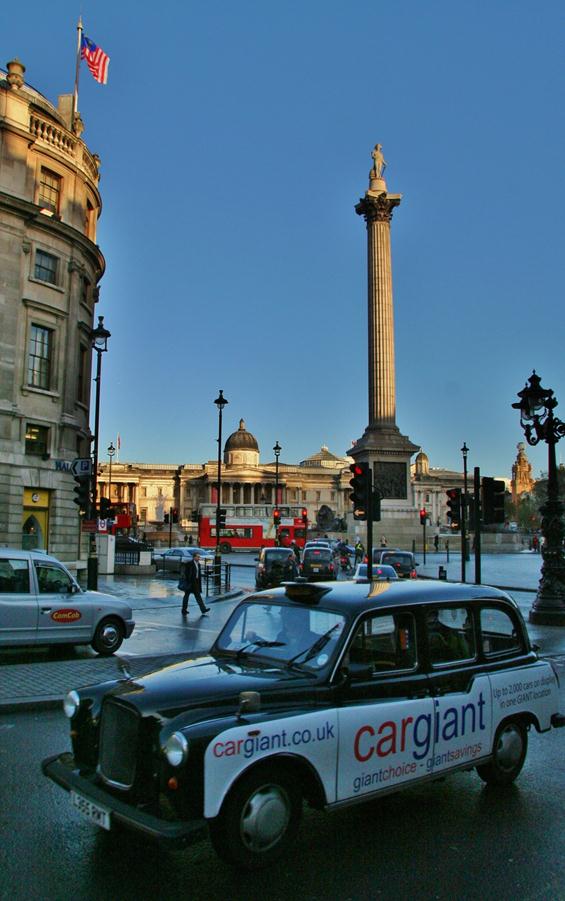
Trafalger Square and the Nelson's Column that is guarded by four lion statues at its base.
Photo: Aage Myhre.

River Thames.
Photos: Aage Myhre

Lithuanians in the UK
Following Lithuania’s Independence and especially after European Union and NATO membership more and more Lithuanians have chosen to live and work in the United Kingdom. There are more than 100,000 Lithuanians in London and over 200, 000 in the UK. The largest Lithuanian communities can be found in London, Birmingham, Manchester, Nottingham, Bradford, and in Scotland. As a result of this, there are numerous Lithuanian organisations (such as a Lithuanian newspaper, schools and Lithuanian Churches) working in the UK. If you are interested in practicing your Lithuanian or just would like to meet Lithuanians, to know more about our culture and traditions, or even to participate in some cultural events, why not try looking at these two websites:
www.lithuanianembassy.co.uk – this is the Lithuanian Embassy’s page on cultural events in the UK. This is the best place to look for information on various events.
www.headleypark.co.uk - Headley Park estate belongs to the Lithuanian community and is the hub of all cultural activities. So, if you want to experience St. John’s Day, Christmas or any other celebrations Lithuanian style you should contact them and ask for more info. Headley Estate also has a hotel, a Lithuanian food restaurant and a camping site with a lake full of fish nearby which is ideal for a summer weekend break.
www.britanijoslietuviai.co.uk - official website for Lithuanian association in the UK.
www.toplanguagecommunity.com/lithuanian-portal/ - this is a Lithuanian community site for Lithuanian speaking people in London, UK and Ireland. The site is available in both Lithuanian and English.
Lithuanian Communities in the UK
www.jkljs.ahost.lt - Lithuanian Youth Community in the UK
wwww.midlitcom.org - Midlands Lithuanian community
bhamlietuviai.org Lithuanian community in Birmingham
www.manchesteris.org - Lithuanian community in Manchester
www.lithuanianchamber.co.uk - Lithuanian chamber of commerce in the UK
Lithuanian Schools in the UK
www.britanijoslietuviai.co.uk/lituanistines_mokyklos.html
Religious Organisations
Lithuanian church in London:
Londono lietuvių Šv.Kazimiero bažnyčia
21 The Oval, Hackney Road, London E2 9DT. Tel: 020 7739 8735
E-mail: ptverijonas@btinternet.com Website: www.londonas.co.uk
Religious and cultural hub in Nottingham, lead by Lithuanian Marian fathers:
Židinys
Lithuanian Marian Fathers, 16 Hound Road
West Bridgford, Nottingham NG2 6AH. Tel.: 01159821892
Music
Lithuanian folk group, Saduto
www.saduto.com/en/aboutus
Saduto was established in 2005. Group members gather every Friday evening at 8:00pm in St. John‘s church, Stratford, London. Everyone is invited.
Rock group, Vital Mission
Website: www.ferrum.lt/f/grupes/128
Lithuanian Scouts in the UK
The Lithuanian scouts movement in the UK started back in 1948. The first camp was organised in 1950, Darley Moor, Derbyshire.It currently has about 50 members ranging from 8 to 70 years old. They meet every second month and have a camp in Headley Park during summer months.
Lithuanian scouts have their magazine 'Budėkime' which is published three times a year.
Lithuanian Basketball Team in the UK
The Lithuanian basketball team, Gintaras
www.gintaras.co.uk/content/view/4/16/lang,english/
Currently, Lithuanian BC (playing in London Metropolitan Basketball League) is on the top of the Men’s Premier League 2008-2009 table. Results can be viewed here:
www.basketballinlondon.co.uk/london_metropolitan_basketball_league/league_fixtures_&_results/
|
Lithuanian City of London Club is a members-only non-profit organisation established in late 2006 under the honorary patronage of H.E. Vygaudas Usackas, the Ambassador of the Republic of Lithuania. The members of the Club are Lithuanian professionals (or professionals with ties/interests in Lithuania) based in London from a wide array of careers and pursuits, predominantly from the City. The Club members get together for social networking, sporting and charitable events as well as for a wide array of topical discussions with business, political and other leaders from Lithuania and UK to foster professional and intellectual interaction between Club members and Lithuanian society. The Club is also building links with other organisations in the UK and actively participates in a number of initiatives and events in the Lithuanian community in London. Currently the Club unites close to 200 members and partners who get together on a regular basis. LCLC Pub Social drinks are every last Thursday of the month. For more information about the Club and our activities, please email info@litcityclub.co.uk The Club's President: Daumantas Mockus, president@litcityclub.co.uk The Board: Rasa Balsytė, Darius Daubaras, Raminta Dereškevičiūtė, Ieva Šatkutė LCLC Newsletter You are welcome to read the 2nd issue of LCLC’s Newsletter! With this publication, the Club aims to keep members, alumni, friends and other stakeholders abreast of LCLC's latest developments, news and adventures. And there have been aplenty! For those who missed the 1st issue - a small recap.
|
|
|
|
Aer Lingus launched services to Vilnius from its London Gatwick in 2011. Cutting the ribbon in the photo is Dr. Oskaras Jusys, the former Lithuanian ambassador to the UK. |
|
Cambridge University is consistently ranked one of the top ten in the world |
||
|
The city of Cambridge is a university town and the administrative centre of the county of Cambridgeshire, England. It lies in East Anglia about 50 miles (80 km) north of London. Cambridge is at the heart of the high-technology centre known as Silicon Fen – a play on Silicon Valley and the fens surrounding the city. Cambridge is well known as the home of the University of Cambridge, which has been consistently ranked one of the top ten universities in the world. The university includes the renowned Cavendish Laboratory, King's College Chapel, and the Cambridge University Library. The Cambridge skyline is dominated by the last two buildings, along with the chimney of Addenbrooke's Hospital in the far south of the city and St John's College Chapel tower in the north. According to the United Kingdom Census 2001, the city's population was 108,863 (including 22,153 students).
|
|
|
|
|
Cambridge University Lithuanian Society [CULS] Cambridge University Lithuanian Society is predominantly Lithuanian, but also welcomes everyone from any background. The society goal is to promote Lithuanian culture as well as to take part in cultural interchange. We have several meetings each term and organise social events for broader audience. We are looking forward to seeing you. www.cu-ls.org/?lang=en
|
|
Robin Hood and the Sherwood Forest
When we continue north to the city of Leeds a road sign with the name of Nottingham shows up, I decide
to take a detour into the Sherwood Forest, Robin Hood's famous habitat. Sherwood Forest is a Royal Forest in Nottinghamshire that is famous through its historical association with the legendary outlaw archer who took from the rich and gave to the poor here, right in the heart of medieval England. This very attractive forest lands attracts 500,000 tourists annually, including many from around the world. Visitor numbers have increased significantly since the launch of the BBC's Robin Hood television series in 2006.
The park hosts the annual Robin Hood Festival for a week each summer. This event recreates a medieval atmosphere and features the major characters from the Robin Hood legend. The week's entertainment includes jousters and strolling players, dressed in medieval attire, in addition to a medieval encampment complete with jesters, musicians, rat-catchers, alchemists and fire eaters.
|
The New Adventures of Robin Hood was filmed in Lithuania The New Adventures of Robin Hood is a 1997-1998 live action TV series on Turner Network Television. It was filmed in Vilnius, Lithuania and produced and distributed by Dune Productions, M6, and Warner Bros. International.
|
|
|
|
Robin Hood was a heroic outlaw in English folklore. A highly skilled archer and swordsman, he is known for "robbing from the rich and giving to the poor", assisted by a group of fellow outlaws known as his "Merry Men". Traditionally, Robin Hood and his men are depicted wearing Lincoln green clothes. The origin of the legend is claimed by some to have stemmed from actual outlaws, or from ballads or tales of outlaws. Robin Hood became a popular folk figure in the medieval period continuing through to modern literature, films and television. In the earliest sources, Robin Hood is a yeoman, but he was often later portrayed as an aristocrat wrongfully dispossessed of his lands and made into an outlaw by an unscrupulous sheriff. In popular culture, Robin Hood and his band of Merry men are usually portrayed as living in Sherwood Forest, in Nottinghamshire, where much of the action in the early ballads takes place. So does the very first recorded Robin Hood rhyme, four lines from the early 15th century, beginning: "Robyn hode in scherewode stod." However, the overall picture from the surviving early ballads and other early references suggest that Robin Hood may have been based in the Barnsdale area of what is now South Yorkshire (which borders Nottinghamshire).
|
Leeds has England’s most romantic castle
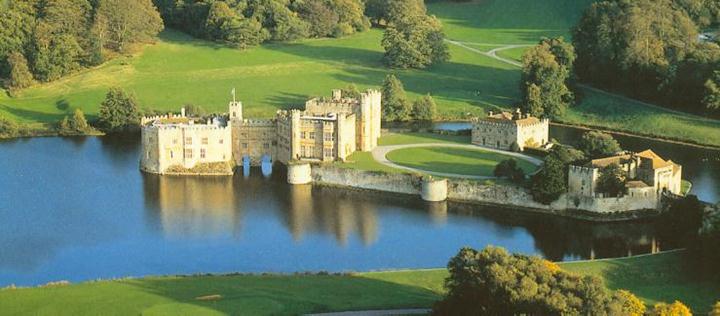
Leeds Castle, acclaimed as the most romantic castle in England.
Photo: www.castles.org.
Our journey north continues. We arrive in Leeds, a city and metropolitan borough in West Yorkshire. In 2001 Leeds' main urban subdivision had a population of 443,247, while the entire city has a population of 798,800 (2011 est.), making it the 30th-most populous city in the European Union. Leeds is the cultural, financial and commercial heart of the West Yorkshire Urban Area, which at the 2001 census had a population of 1.5 million, and the Leeds-Bradford Metropolitan Area, of which Leeds is the integral part, had a population of around 2.3 million, making it the fourth-largest metropolitan area in the United Kingdom. In addition, the Leeds city region, an economic area with Leeds at its core, had a population of 2.9 million. Leeds is the UK's largest centre for business, legal, and financial services outside London, and its office market is the best in Europe for value. Leeds is considered a Gamma World City, alongside cities such as Rotterdam, Phoenix, St. Petersburg and Valencia.
|
|
From Leeds to Lithuania for mushy pea beer My grandparents came from Kowno (now more often known as Kaunas) in Lithuania. I have long wanted to visit Lithuania, and recently I did. Programs and wars have all but erased the culture I tasted as a child in Leeds, and my grandparents knew in Kaunas, but I did manage to see mead being made, and to sample the richly honeyish, herbal result. The old brewery building still stood, a tiny brick tower that may be unique in Lithuania, but would not look out of place in the Black Country. It is at Stakliskes, between Kaunas and Vilnius, the capital. Its product is simply called Lithuanian Mead (Lietuviskas Midus). Read more at: http://www.beerhunter.com/documents/19133-000921.html
|
Manchester hosts the oldest Lithuanian club in the UK
|
From Leeds our trip goes west, to Manchester. Here we find that there is a Lithuanian club with own premises in the city since the end of 1948, though the club as an organization has been in operation since 1925. It is the oldest Lithuanian organization in the UK. Manchester is a city and metropolitan borough in Greater Manchester, England. According to the Office for National Statistics, the 2010 mid-year population estimate for Manchester was 498,800. Manchester began to expand "at an astonishing rate" around the turn of the 19th century, brought on by a boom in textile manufacture during the Industrial Revolution, and resulted in it becoming the world's first industrialised city. An early 19th-century factory building boom transformed Manchester from a township into a major mill town and borough that was granted city status in 1853. In 1894 the Manchester Ship Canal was built, creating the Port of Manchester. The city is notable for its culture, music scene, scientific and engineering output, media links and sporting connections. Manchester's sports clubs include Premier League football teams, Manchester City and Manchester United. Manchester was also the site of the world's first railway station. |
|
Liverpool – birthplace of The Beatles
|
|
We have arrived in Liverpool – at the famous Mersey river and the shores of the Irish Sea on England’s western coast. The popularity of The Beatles, Gerry and the Pacemakers and other groups from the Merseybeat era have made Liverpool famous, and contributes a lot to the city’s status as a tourist destination. Some may say that football also has played a role... Liverpool is a city and metropolitan borough of Merseyside, along the eastern side of the Mersey Estuary. It was founded as a borough in 1207 and was granted city status in 1880. As of 2001 Liverpool had a population of 435,500, and lies at the centre of the wider Liverpool Urban Area, which had a population of 816,216. Historically a part of Lancashire, the urbanisation and expansion of Liverpool were both largely brought about by the city's status as a major port. By the 18th century, trade from the West Indies, Ireland and mainland Europe coupled with close links with the Atlantic Slave Trade furthered the economic expansion of Liverpool. By the early 19th century, 40% of the world's trade passed through Liverpool's docks, contributing to Liverpool's rise as a major city. Inhabitants of Liverpool are referred to as Liverpudlians but are also colloquially known as "Scousers", in reference to the local dish known as "scouse", a form of stew. The word "Scouse" has also become synonymous with the Liverpool accent and dialect. Liverpool's status as a port city has contributed to its diverse population, which, historically, were drawn from a wide range of peoples, cultures, and religions, particularly those from Ireland. The city is also home to the oldest Black African community in the country and the oldest Chinese community in Europe. Several areas of the city centre were granted World Heritage Site status by UNESCO in 2004. Referred to as the Liverpool Maritime Mercantile City, the site comprises six separate locations in the city including the Pier Head, Albert Dock and William Brown Street and includes many of the city's most famous landmarks. Liverpool is the home of two Premier League football clubs, Liverpool F.C. and Everton F.C.. Matches between the two clubs are known as the Merseyside derby. |
|
|
|
Liverpool companies invited to Lithuania |
|
|
Invest Lithuania was last October hosting a seminar at Liverpool Chamber of Commerce to introduce the advantages, opportunities and support available to UK companies interested in developing their business in Lithuania. It was a multi-sector seminar but particularly relevant to those working in IT, bioscience, financial services and manufacturing companies considering investing in R&D. The seminar had a range of high quality speakers who introduced the Lithuanian market, its workforce and its competitive advantage as well as an overview of the support available to UK companies looking to invest in Lithuania. The speakers also gave detailed overviews of particular sectors and shared their experiences of working in Lithuania as well as giving the audience an opportunity to ask questions. This seminar was part of a series run by CC Baltic on behalf of Invest Lithuania, who were also holding seminars in Aberdeen and Teesside. The seminars are directed to companies interested in finding out why Lithuania today is considered one of the best places in Europe to develop business.
|
|
|
Please contact Anatasia Zencika (Anastasia@ccbaltic.eu) or the International Trade Team (export@liverpoolchamber.org.uk) for more information.
|
|
|
The Beatles was discovered and managed by a Lithuanian Jew
Brian Epstein (1934-1967) was the man who discovered the Beatles, and guided them to mega-stardom, making them the most successful musical artists of all time. Without Brian, the Beatles as we came to know them, simply wouldn't have existed. In 1965, both Paul McCartney and George Harrison, on being awarded their M.B.E.s by the Queen, said "M.B.E. stands for Mr. Brian Epstein." Brian Samuel Epstein was an English music entrepreneur, and is best known for being the manager of The Beatles up until his death. In 1961 Brian Epstein saw the new band for the first time at The Cavern Club in Liverpool. After the concert he went to speak to them and offered to manage them. On 10th. December 1961 it was decided that Brian Epstein should be the manager of The Beatles, and a contract was signed on 24th. January, 1962. He secured a record contract for them with EMI, and, on the request of John Lennon, Paul McCartney, and George Harrison, he sacked the drummer Pete Best so that he could be replaced by Ringo Starr. Brian Epstein remained the manager on The Beatles until his death. Epstein paid for The Beatles to record a demo in Decca's studios, which Epstein later persuaded George Martin to listen to, as Decca were not interested in signing the band. Epstein was then offered a contract by Martin on behalf of EMI's small Parlophone label, even though they had previously been rejected by almost every other British record company. Martin later explained that Epstein's enthusiasm and his confidence that The Beatles would one day become internationally famous convinced him to sign them. Epstein died of an accidental drug overdose at his home in London in August 1967. The Beatles' early success has been attributed to Epstein's management and sense of style. McCartney said of Epstein: "If anyone was the Fifth Beatle, it was Brian". Epstein's family were Jewish, his grandfather, Isaac Epstein, was from Lithuania and arrived in England in the 1890s, at the age of eighteen. His grandmother, Dinah, was the daughter of Joseph (who was a draper) and Esther Hyman, who emigrated from Russia to England. Regrettably, the man who did so much for the Beatles has become a comparatively forgotten man since his death. VIDEO: LET IT BE Paul McCartney said he had the idea of "Let It Be" after a dream he had about his mother during the tense period surrounding the sessions for The Beatles (the "White Album"). McCartney explained that his mother—who died of cancer when McCartney was fourteen—was the inspiration for the "Mother Mary" lyric. He later said, "It was great to visit with her again. I felt very blessed to have that dream. So that got me writing 'Let It Be'." He also said in a later interview about the dream that his mother had told him, "It will be all right, just let it be."
|
|
Oxford – the dignified university city We have come to our trip's final destination, to Oxford, home of the second-oldest surviving university in the world and the oldest university in the English-speaking world. Oxford city is the county town of Oxfordshire, and forms a district within the county. It has a population of just under 165,000, of whom 153,900 live within the district boundary. It lies about 50 miles (80 km) north-west of London. The rivers Cherwell and Thames run through Oxford and meet south of the city centre. Oxford has a diverse economic base. Its industries include motor manufacturing, publishing and a large number of information technology and science-based businesses. Buildings in Oxford demonstrate an example of every English architectural period since the arrival of the Saxons, including the iconic, mid-18th century Radcliffe Camera. Oxford is known as the "city of dreaming spires", a term coined by poet Matthew Arnold in reference to the harmonious architecture of Oxford's university buildings.
|
|
||
|
|
|||
|
|
|||
|
|
|||
|
My Oxford friend Mervyn Bedford, a teacher in love with Lithuania
Because I know Aage Myhre and his wife and very much respect what he is trying to do for Lithuania, I offered to write of educational values for VilNews. The Baltic nations have a perfect opportunity to change the map of educational provision in ways that better fit the rapidly changing world of the 21st. century. Education is not about buildings. It is not about systems and organisations. It is not about tests and inspections. It is about people and the relationships between those who want to learn, or need to learn, and those who already know it. For almost 150 years State school systems have imposed a model of teaching and learning that has hardly changed while society has fundamentally changed and, recently, very rapidly. Those changes are racing unseen towards our youngest children. Read Mervyn’s article at https://vilnews.com/?p=979
|
- Bookmark :
- Digg
- del.icio.us
- Stumbleupon
- Redit it
- Posted by - (0) Comment
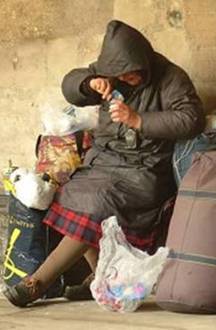
"Lithuania's austerity was too harsh and too sudden"
Aage Myhre, 60, is the Norwegian architect, journalist and publisher whose community building skills have made him a small expat phenomenon in Vilnius. He is about to return to his home country after twenty two years in Vilnius, taking along his Lithuanian spouse and two daughters, but leaving his other object of admiration, Vilnius' Old Town, behind.
news2biz met Aage to ask him to reflect on his Lithuanian stay that lasted much longer than he expected.
Q: In Norway, Lithuanians last year became the second biggest immigrant community. How do you feel about it?
What I don't like about Norwegian authorities is that they are discussing only what advantages (low-cost skilled labour) or disadvantages (crime) the Lithuanian immigrants create for Norway. I never heard somebody say, 'This is so bad for Lithuania that we take their best brains'. If this issue was discussed from both sides early on, the authorities could have become more focused on it and could probably come up with some solutions.
Obviously, many Lithuanians wouldn't have left their country if it wasn't for the Andrius Kubilius' Conservative government's austerity policy that started in 2008. It was like putting brakes on in a car that was already standing still.
I personally urged Kubilius to write to Scandinavian prime ministers to seek some kind of assistance. For instance, to a country like Norway to support Lithuania would have cost very little.
Later I met Norway's Conservative Party leader and asked if Kubilius ever asked for help and support to deal with the crisis or the energy prices pushed up by Russia. She said, no, never.
Read the whole interview HERE...
__________________________
 Opinion: JP
Opinion: JPHochbaum, Chicago
The austerity
trap of the
Eurozone
__________________________
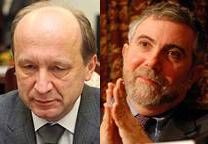
Lithuania’s former prime minister, Andrius Kubilius (left) is a staunch austerity advocate - for those who want to cut spending to reduce deficits and "restore confidence."
"Stimulus" spending, Paul Krugman (right) argues, would help reduce unemployment and prop up economic growth until the private sector heals itself and begins to spend again.
__________________________
Greeks won, Lithuanians lost!
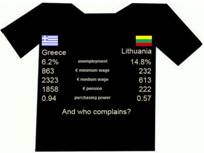
Before they realized what is going on and who was robbing them, the Lithuanian people got clubbered by PM Kubilius’ ambitious austerity policy and the younger ones started emigrating in catastrophic numbers, seeing no future in the country whose GDP was reduced (from a low post-Soviet level) by some 20% by the combination of the old nomenklatura rent-seeking policies and the global Great Recession. Lithuania is hollowing out, unfortunately.
Read more…
__________________________
A far too bright picture of the present reality
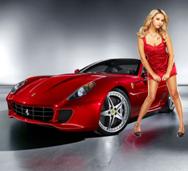
The above post from Val Samonis, where he compares “crisis-hit” Greece and a Lithuania supposed to be quickly recovering from the 2008 crisis, internationally praised for its austerity measures, calls for reflection.
The difference is that while the people of Greece protest and angrily demonstrate in the streets of Athens, people here only become more and more bitter, emigrate, begets crime in other countries, etc.
Lithuania's elderly and disadvantaged people who have seen their minimum pensions drastically cut, and mothers seeing that the child benefits are completely removed as concept, they bow their necks and become even more active in growing potatoes on their garden spots outside the city instead of standing up against the government’s unfair measures against them...
This country's politicians claim they have been the smartest in...
__________________________
What is this country going to live on 20 years from now?
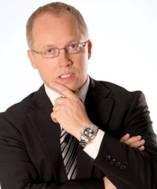
Palle Gravesen Jensen.
A Danish expat to Lithuania, owner of two manufacturing companies, Electronic House and Metalco Baltic. Member of the board of the Danish Chamber of Commerce (DCC) in Lithuania. His family was one of the three families founding the Vilnius International School.
There are a number of issues to discuss with regards to Lithuania of today, the country I made my own 16 years ago, moving from my homeland Denmark.
One particular question, however, comes to my mind again and again: What is this country going to live on 20 years from now. It is a big question. My concern is there will not be much at all if nothing is done immediately.
- Bookmark :
- Digg
- del.icio.us
- Stumbleupon
- Redit it
- Posted by - (0) Comment
Riga: The 15th Baltic Development Forum (BDF) Summit
May 29 — May 30, 2013
Riga Congress Centre, Riga, Latvia
The main focus of this year’s event will be on competitiveness, investment and business development and the role of the Baltic States in improving the Baltic Sea Region’s overall competitiveness and growth opportunities.
The agenda will focus on growth and competitiveness in the Baltic Sea Region, with the spotlight on investment projects, not least public-private co-operation. To become smarter and greener, public-private partnerships are essential. By improving framework conditions, these partnerships’ can for instance help to focus and optimize sustainable infrastructure investment, which is key to kick-starting wider economic growth in the Region, benefitting the European economy at large.
Read more...
- Bookmark :
- Digg
- del.icio.us
- Stumbleupon
- Redit it
- Posted by - (0) Comment

Vilnius: World Lithuanian Economic Forum
June 03, 2013 08:00 —
June 03, 2013 20:00
Litexpo Exhibition Centre, Laisvės avenue 5, Vilnius LT-04215, Lithuania
WLEF is an event that brings together leading international and local economic players across a range of industries. The main event idea is to deliver this unique dialogue with leading Lithuanians from around the world so that they will make connections and explore the opportunities that Lithuania has to create a powerful global community of Lithuanians overseas.
The forum will gather business leaders, entrepreneurs, creators and successfull personalities of Lithuanian origin from USA, UK, China, Russia, Estonia, Belgium, France and other countries. The event will attract over 1000 participants, seeking to share their global business and management experience.
Business and government leaders will search for answers how should Lithuanian economy compete in the world by using nowadays global challenges, opportunities in various fields of economy. International speakers will present macro-economic global and Lithuanian forecast, they will reveal answers how to grow business successfully, find global markets, how and where to invest.
Read more...
- Bookmark :
- Digg
- del.icio.us
- Stumbleupon
- Redit it
- Posted by - (3) Comment
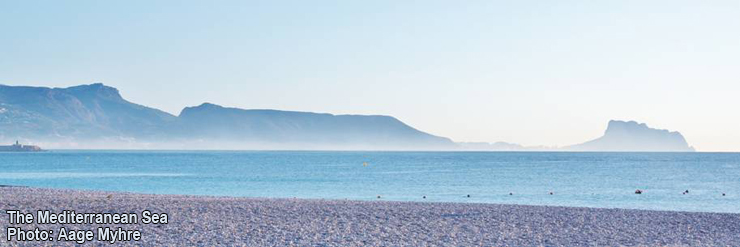

EXPLORING EUROPE (3 of 10)
Along the Riviera
ITALY – FRANCE – MONACO –SPAIN
Tour guide, writer and photographer: Aage Myhre
aage.myhre@VilNews.com
|
We have started our little tour of Europe.
|
Portovenere

Portovenere is a hidden treasure tucked away in the north-western area of Italy, one of my favourite Mediterranean towns, dating back to at least the middle of the first century. The ancient town is a hidden treasure for tourists and even residents of Italy to discover. When people first hear of Portovenere, the natural comparison is matched against the world renowned Portofino, but when visited, the two places are completely different. In fact, it can be said that Portovenere is a much more inspiring experience because of the breathtaking landscape that has been naturally architected by mother nature and mankind together over time, which is rich history. The town, or “comune” as referred to by the Italian government, is located on the provincial coast of La Spezia, in the region of Liguria. Rocky horizons, lush forests and vegetation, completed with bodies of water supplied by the Mediterranean Sea, surround this area.
We start our Riviera trip here. But first we enjoy a wonderful filletto with a rich, deep red Barbera on the boardwalk Restaurant above.
The next day the tour starts, along the Italian Riviera and the French Cote d'Azur. We travel to France's best preserved medieval town, not far from the Spanish border, Carcassonne! Phenomenal dinner, good
Languedoc wines. Next morning, we go to the village of Mary Magdalene and The Holy Grail. Later that day we pass the Pyrenees. After a few hours’ drive of ever new mountain pass, Paradise opens before us when we arrive at Spain’s Costa Blanca, the White Coast. And down there, below us, the the Mediterranean Sea in all its azure-blue splendour.
|
|
Liguria
|
Liguria is a coastal region of north-western Italy, the third smallest of the Italian regions. Its capital is Genoa. It is a popular region with tourists for its beautiful beaches, picturesque little towns, and good food. Liguria borders France to the west, Piedmont to the north, and Emilia-Romagna and Tuscany to the east. It lies on the Ligurian Sea. The narrow strip of land is bordered by the sea, the Alps and the Apennines mountains. Some mountains rise above 2000 m; the watershed line runs at an average altitude of about 1000 m. The winding arched extension goes from Ventimiglia to La Spezia and is one of the smallest regions in Italy. Liguria is just 5,422 square kilometres, or 1.18% of all of Italy. Of this, 3524.08 kilometres are mountainous (65% of the total) and 891.95 square kilometres are hills (35% of the total). Liguria's Natural Reserves cover 12% of the entire region, or 60,000 hectares of land. They are made up of one National Reserve, six large parks, two smaller parks and three nature reserves.

The Cinque Terre is a rugged portion of coast on the Italian Riviera. It is in the Liguria region of Italy, to the west of the city of La Spezia. "The Five Lands" is composed of five villages: Monterosso al Mare, Vernazza, Corniglia, Manarola, and Riomaggiore. Photo: http://www.dycnic.com
Genoa (Genova in Italian)
Money flowed into the Ligurian port city made famous by Columbus and now it's a better place than ever to visit. Genoa has a fascinating aquarium, an interesting port, and a historic center said to be the largest medieval quarter in Europe, with a wealth of churches, palaces, and museums. In 2006, Genoa's Rolli Palaces were added to the list of UNESCO World Heritage Sites. Genoa is famous for pesto (basil, pine nuts, garlic, and parmigiano cheese) usually served overtrenette or trofia pasta cooked with potatoes and green beans. Being a port city, Genoa also has some good seafood dishes such as the fish stewburidda.
Genoa is Italy's principal seaport and is located on the northwest coast of Italy in the region of Liguria, not far from the French border.

Piazza de Ferrari, Genoa.
|
Was Christopher Columbus from Genoa or from Lithuania?
Will Lithuanians be able to add another page to their already epic history? Will the National Lithuanian American Hall of Fame (NLAHF) have yet one more candidate for induction? Daine Jablonskyte-Marquez and Jon Platakis, members of the NLAHF, tracked down historian Manuel Rosa at his job at Duke University, to enlighten us on his 20 plus years of research into the identity of Christopher Columbus. Confidently, and with primary source documents to verify his assertions, Rosa states, “Columbus was a royal prince, son of a Portuguese noble lady and exiled King Wladyslaw III (a direct descendent of one of Europe’s greatest ruling dynasties, Lithuania’s Gedeminian dynasty). He was hiding his identity from the public at large but the courts of Europe knew who he was.” Pointing to documentation in his new book, COLON. La Historia Nunca Contada (COLUMBUS. The Untold Story) recently published in Spain, published May 2012 in Poland, that Columbus’ marriage in 1479 to a Portuguese noblewoman, who was a member of the Portuguese military order of Santiago, required the approval of the King of Portugal, a procedure reserved only for someone of major importance. “This new Portuguese document alone,” stated Rosa, “makes the entirety of Columbus’ Italian history false.” Rosa’s evidence appears irrefutable that Columbus, who had been housed in the palaces of the nobility, had access to royal courts, and married into nobility, could not be, as our history books tell us, the son of a poor weaver from Genoa. So, who was Christopher Columbus, if not a poor weaver’s son from Genoa? Rosa believes that his true identity was Prince Segismundo Henriques which was concealed in order to protect his father. All of Rosa’s evidence points to Wladyslaw III, king of Poland and Lithuania as being the father of Christopher Columbus. Rosa suggests that there is proof the king survived the Battle of Varna in 1444 against the Ottomans and lived in exile on the island of Madeira under the name of “Henrique the German,” married to a Portuguese noblewoman. Is this just another nutty conspiracy theory? Not according to leading historians based at the University of Lisbon, and St. Joseph’s University. Rosa utilized medieval documents and chronicles from multiple kingdoms to cross-reference historical events and personalities, plus ancient genealogy and heraldry. In addition, Rosa’s mastery of Spanish, Italian, and Portuguese, allowed him a more accurate interpretation of these primary source documents. Members of the National Lithuanian American Hall of Fame, lament the fact that there seems to be little interest from American, and our own Lithuanian historians and researchers, to either accept or contradict Rosa’s findings. According to Rosa, he has not yet had any success in finding a U.S. publisher for this history altering book. It appears a certainty that Christopher Columbus was not the poor weaver’s son from Genoa. However, in the near future, it is hoped that Polish authorities will open the tomb of King Wladyslaw II, (Jogaila) the Lithuanian King of Poland, to obtain DNA evidence to prove that Christopher Columbus is a son of Lithuania who hid his royal lineage to protect the secret that his father had survived the Battle of Varna. Read more in VilNews: https://vilnews.com/?page_id=150
|
Ventimiglia
|
Ventimiglia is located on the Italian side, a few kilometers from the border with France, in the province of Imperia. It is divided into two zones: the upper part, medieval, perched right on the river Roia, and the lower part located, between the Roia and the Nervia, on the flat part of the coast. The old centre rises in an imposing position and is easily distinguished for all corners of the plain. The urban structure is characterized by the presence of several clusters of houses, which are built one to each other according to the different time frames of construction: Like in most of the centers of Liguria, due to the lack of space, the houses grow in height. The irregular arrangement of buildings, arches, canopies and religious shrines create always different angles and do not leave space for monotony. |
|
|
|
Monaco
|

The Monte Carlo Casino.
Photo: Wikipedia.
We have come to Monaco, officially the Principality of Monaco, a sovereign city state on the French Riviera. It is bordered on three sides by its neighbour, France, and its centre is about 16 km (9.9 mi) from Italy. Its area is 1.98 km2 (0.76 sq mi) with a population of 35,986 as of 2011 and is the most densely populated country in the world. Monaco boasts the world's highest GDP nominal per capita at $151,630. Monaco also has the world's highest life expectancy at almost 90 years (CIA estimate, 2011), and the lowest unemployment rate at 0%, with about 40,000 workers who commute from France and Italy each day. After a recent expansion of Port Hercule, Monaco's total area is 2.05 km2 (0.79 sq mi), with new plans to extend the district of Fontvieille, with land reclaimed from the Mediterranean Sea.
Monaco is a principality governed under a form of constitutional monarchy, with Prince Albert II as head of state. The House of Grimaldi has ruled Monaco, with brief interruptions, since 1297. The state's sovereignty was officially recognized by the Franco-Monegasque Treaty of 1861. Despite Monaco's independence and separate foreign policy, its defence is the responsibility of France.
Citizens of Monaco are called Monacans, while Monegasque is the proper term for describing someone who was born in Monaco.
Le Grand Casino de Monte Carlo opened in 1858, and the casino benefited from the tourist traffic the newly built French railway system created. Due to the combination of the casino and the railroads, Monaco finally recovered from the previous half century of economic slump, and the principality's success attracted other businesses. In the years following the casino's opening Monaco founded its Oceanographic Museum and the Monte Carlo Opera House, 46 hotels sprang up and the number of jewellers operating in Monaco increased by nearly 500 percent. By 1869, the casino was making such a vast sum of money that the principality could afford not to collect tax from the Monegasques; a master stroke that was to attract affluent residents from all over Europe.
Today, Société des bains de mer de Monaco which owns Le Grand Casino still operates in the original building the Blancs constructed and has been joined by several other casinos, including Le Casino Café de Paris, the Monte Carlo Bay Casino, the Monte Carlo Sporting Club & Casino (Summer Casino) and the Sun Casino. The most recent addition to the list—the first casino to open in Monte Carlo in 75 years—is the Monte Carlo Bay Casino, which sits on 4 hectares of the Mediterranean Garden and, among other things, offers 145 slot machines.
|
|
Provence
|

Provence is the south eastern region of France on the Mediterranean adjacent to Italy. It is part of the administrative région of Provence-Alpes-Côte d'Azur. The traditional region of Provence comprises the départements of Var, Vaucluse, Bouches-du-Rhône, Alpes-de-Haute-Provence, Alpes-Maritimes and parts of Hautes-Alpes. The Romans formed this region into their Gallia Transalpina, the first Roman provincia outside the Alps. From thus, it derives its name today.
From the Alpine mountains down to the sand beaches of Saint Tropez, Cannes, Nice, the region is an important destination for tourist offering a favorable climate all year round. Perfumes, rosé wines, jazz and a distinct cuisine, the region has a rich culture, traditions and festivals. The Cannes Film festival, Nice Carnival and the Jazz festival are just a few of the highlights.
Nice

Photo: Wikipedia.
Nice is the fifth most populous city in France, after Paris, Marseille, Lyon and Toulouse, with a population of 348,721 within its administrative limits on a land area of 71.92 km2 (28 sq mi). The urban area of Nice extends beyond the administrative city limits with a population of more than 955,000 on an area of 721 km2 (278 sq mi). Located on the south east coast of France on the Mediterranean Sea, Nice is the second-largest French city on the Mediterranean coast. The city is called Nice la Belle (Nissa La Bella in Niçard), which means Nice the Beautiful, which is also the title of the unofficial anthem of Nice, written by Menica Rondelly in 1912. Nice is the capital of the Alpes Maritimes département and the second biggest city of the Provence-Alpes-Côte d'Azur region after Marseille. The area of today’s Nice is believed to be among the oldest human settlements in Europe. One of the archaeological sites, Terra Amata, displays evidence of a very early use of fire. Around 350 BC, Greeks of Marseille founded a permanent settlement and called it Nikaia, after Nike, the goddess of victory.
Grasse (the world’s perfume capital) and a Lithuanian designer


Juozas Statkevièius (b. 1968 in Kaunas ) - Lithuanian fashion designer, theatre costume designer, hairdressing master, professional model. First Lithuanian designer presented in the magazines Vogue, L'Officiel, Elle, Harper's Bazaar. Has created his own perfume named "Josef Statkus.
Let me suggest that you drive a bit inland after Nice. Go to Grasse, a commune in the Alpes-Maritimes department, atown considered the world's capital of perfume. It obtained two flowers in the Concours des villes et villages fleuris contest and was made "Ville d'Art et d'Histoire" (town of art and history).
The Lithuanian-born designer Juozas Statkevicius, now based in Paris, has been designing fashions and theatre costumes since the 1990s, but first came to international attention after showing a perfume collection in Paris in 2002. His first perfume, titled simply Juozas Statkevicius Eau de Parfum, was launched in 2004.
Cannes

Photo: Wikipedia.
Cannes is one of the best-known cities of the French Riviera, a busy tourist destination and host of the annual Cannes Film Festival. It is a Commune of France in the Alpes-Maritimes department. The city is also famous for its various luxury shops, restaurants, and hotels. This Riviera city on the Cote d'Azur hosts Europe's most famous annual Film Festival, and has long been a playground for sophisticated pleasure seekers. Cannes is noted for beautiful sandy beaches, most of which charge an entry fee to keep out the riff-raft. It's a far cry from the early 19th century, when this was a small fishing and agricultural village. But then the place was discovered by the aristocracy, who built exclusive holiday villas, and it was only a matter of time before Cannes became a seriously classy resort.
Saint-Tropez
|
|
|
|
Saint-Tropez is located on the French Riviera, west of Cannes, and is known today for its famous and extremely wealthy summertime guests. It has been dubbed the 'playground to jetsetters, fashion models, and millionaires', and it is most-enduringly known as the place where the iconic Brigitte Bardot was "discovered" and for its role in the liberation of southern France during World War II. Topless sunbathing is now a usual way for both men and women, from Pampelonne beaches to yachts in the centre of Saint-Tropez port. The Tahiti beach is "clothing-optional", but also nudists are going to private nudist lands, like that in Cap d' Agde. "Modest" clothing is basically seen in Saint-Tropez, because of the end of "illegal taste-era" and stars (but not everyone), that don't want their nude photos, made available next day on colour magazines, by paparazzi. |
Avignon
|
|
Let me suggest that you go a bit inland again, after the luxurious, expensive experiences you had in Saint-Tropez...
Let’s go to Avignon at the bank of the Rhône River, often referred to as the "City of Popes" because of the presence of popes and antipopes from 1309 to 1423 during the Catholic schism, it is currently the largest city and capital of the département of Vaucluse. This is one of the few French cities to have preserved its ramparts, its historic centre, the palace of the popes, Rocher des Doms, and the bridge of Avignon. It was classified a World Heritage Site by UNESCO under the criteria I, II and IV.
The bridge of Avignon, which today is only a half-bridge, has achieved worldwide fame through its commemoration by the song "Sur le pont d'Avignon" ("On the bridge of Avignon"). It goes as follows:
|
|
Languedoc-Roussillon
|

Cathedral of Saint-Nazaire Languedoc-Roussillon.
Photo: http://www.citypictures.org
Languedoc-Roussillon is one of the 27 regions of France. It comprises five departments, and borders the other French regions of Provence-Alpes-Côte d'Azur, Rhône-Alpes, Auvergne, Midi-Pyrénées on the one side, and Spain, Andorra and the Mediterranean sea on the other side.
This region was one of the earliest to be inhabited by humans and, located between the Atlantic Ocean and the Mediterranean, was an extremely important trade route and passage.
The Roman history of Languedoc-Roussillon is long and has left some spectacular traces. The names of towns, the Catalan language, the region’s heady wines and olive-oil dishes all testify to the lasting influence of 400 years of occupation. It is also where the Romanesque art emerged in the early 11th C in its most impressive way ranging from little churches to large, important Cistercian abbeys. This is also a region where the “Cathars”, named after the Greek “katharos” or “pure”, fought the Catholic church of the time in the 13th C; it took many decades to exterminate this movement whose followers believed the visible world to be the work of the devil. Nowadays, many impressive fortresses perched on dizzying heights and the ancient villages still bear witness to a lost religion.
Sète – the Venice of France

Known as the Venice of Languedoc and the singular island (in Paul Valéry's words), it is a port and a sea-side resort on the Mediterranean Sea with its own very strong cultural identity, traditions, cuisine and dialect. It is also the hometown of artists like Paul Valéry, Jean Vilar and Georges Brassens.
Narbonne
|
|
Narbonne is a charming small city in the Languedoc, with wonderful historic attractions as well as a relaxing beach along the Mediterranean. Until I came to Lithuania I thought this was the city in the world with the most beautiful girls. The heart of Narbonne, once a key port for the Roman Empire, is the dramatic Place de l'Hôtel de Ville. Also be sure to stroll through the village’s old town, where you can’t miss the main attraction: Cathedrale Saint-Just. The most dominant building in this neighbourhood, the 13th century church connects to the Palais des Archevêques, which has an ornately carved 130-meter keep. Narbonne lives up to its part in the deal. The weather never ceases to be perfectly cloudless with good, hot temperatures hovering around 90 to 95 Fahrenheit, (32 to 38 Celsius), low humidity and lots of boisterous, fragrant restaurants serving up mussels steamed in white wine, paella, platters of shellfish on ice, and gallons of chilled wines. |
|
Carcassonne - France’s most genuine Medieval town |
|
|
Photo: Wikipedia.
We drive from Languedoc's Riviera to France's best preserved medieval town, not far from the Spanish border.
Carcassonne! Phenomenal dinner, good Languedoc wines. Paté of crispy roasted toasts as starter, quails as main course. Castle towns around Europe are fantastic. The story lives around us Europeans. We are lucky to live and experience such as this...
No matter which direction you are coming from, you can’t miss the imposing silhouette of the City of Carcassonne which is encircled by a huge double row of fortified walls that run almost 2 miles long, accentuated by 56 watchtowers. During the 9th and 10th centuries B.C., the village of Carcas was already a very large and active agglomeration, about a mile south of Carcassonne. Its inhabitants migrated to the present location of Carcassonne around 600 B.C. At that time, the common way to protect a city was to dig a large moat and build a very tall reinforced wood fence all around it. The 3rd century A.D. was a particularly unstable period that saw incessant Barbarian invasions. This is when Carcassonne decided to update its defense mechanisms and solidify its ramparts, building the fortified walls that we can still admire today. Rattled by another period of invasions and insecurity, the inhabitants built a second exterior wall around 1230. It took several thousand soldiers to protect the city back then. The 2000-year-old city of Carcassonne still stands today as the most successful achievement in military architecture of that time in Europe. Nothing has really changed since the 13th century, and if you find yourself in the south of France, you should not miss the chance to be carried back to the heart of the Middle Ages and feel the magic of its glorious past.
|
|
Who were the Cathars? The Cathars were an integral part of Carcassonne history. Catharism was a very active religion in Europe and especially in the area around Carcassonne. The middle of the 12th century was a prosperous period of French history, as well as one of great religious tolerance when Jews, Catholics and Cathars all lived in harmony. Cathars were Christians, but unlike the Roman Catholics, they believed that God had only created spiritual perfection and eternity, not the material world that they saw as the Devil’s creation. Therefore, they led very austere lives, refusing any earthly pleasure. They did not eat any fancy food such as meat. Sex and wealth were banned. |
|
A VILLAGE IN LANGUEDOC, SOUTHERN FRANCE Jesus, Mary Magdalene, the “da Vinci Code”, “the Holy Grail” and Vilnius University Library
The village Rennes le Château, 45 km south of Carcassonne, should definitely be part of your Riviera trail. Explore the village and its church which is dedicated to Mary Magdalene and shrouded in mystery. Followers of the Da Vinci code will be fascinated by the history surrounding the whole of this area. Here, many believe, Mary Magdalene came after the death of Christ. And because of her influence, a whole order of fighting men, known as the Knights Templar, were created. In The Holy Blood and the Holy Grail, a book by Michael Baigent, Richard Leigh, and Henry Lincoln from 1982, the authors put forward a hypothesis, that the historical Jesus married Mary Magdalene, had one or more children, and that those children or their descendants emigrated to what is now southern France. Once there, they intermarried with the noble families that would eventually become the Merovingian dynasty, whose special claim to the throne of France is championed today by a secret society called the Priory of Sion. They concluded that the legendary Holy Grail is simultaneously the womb of saint Mary Magdalene and the sacred royal bloodline she gave birth to. The 2003 conspiracy fiction novel The Da Vinci Code by Dan Brown makes reference to this book, also liberally using most of the above claims as key plot elements. Wherever Mary traveled in France, she taught the skill of healing with oils. Few people realize the wisdom that the Magdalene presented to the world in the development of the use of essential oils. She was the mystical woman that anointed Jesus' feet. This demonstrates her skill in the use of essential oils. Biblical references to Mary Magdalene include information that she was one of the women who accompanied Jesus after he healed her of possession by several demons (Luke 8:2, and Mark 16:9). She is also reported to have been one of the women at the foot of the cross (Mark 15:40, Matthew 27:56 and John 19:25), and one of the women to arrive at the tomb at first light on Easter morning (Mark 16:1, Matthew 28:1, Luke 24:10, John 20:1-3). The gospel of John says that she came alone to the tomb and encountered Jesus, at first believing him to be the gardener. She even reached out and embraced him when she recognized him, calling him "Rabboni," an affectionate form of the word Rabbi. Obviously this Mary, called "the Magdalene," was an intimate friend and companion of Jesus. After the crucifixion of Jesus, Mary Magdalene moved to France and lived for several years. Her offspring became the kings of France, known as the Merovingian line. French history states that she was the sister of Lazarus, who sat at the feet of Jesus, absorbing his teachings (Luke 10:28-42), and who later anointed his feet with nard (spikenard, an essential oil) and dried them with her hair (John 11:2 and 12:3). Part of the mystery about Rennes-le-Chateau is centered on the offspring of the Magdalene. The last French king in the Merovingian line was Dagobert II. He and his son Sigebert were supposedly killed. However, the young Sigebert was smuggled into Rennes-le-Chateau by his mother, and there, the whole mystery of the Templars was created to prove the birth rites of the lineage of the Magdalene. Because of this wisdom, alchemy in France became a reality. The Merovingians knew the mysteries that Jesus taught, like changing water into wine. Around 1090, nine priests went to Jerusalem and searched around the temple of Solomon for proof of this lineage, and for a better understanding of the development of alchemy. Out of this search came the birth of the Templars. What they discovered while in Jerusalem is the true wisdom of alchemy. They found the instruments know as the Holy Grail. They learned how to use these instruments to change mind over matter (alchemy). |
|||
|
|
The Pyrenees
|

Some Blonde d'Aquitaine on summer pasture near the Pic du Midi d'Ossau.
Photo: Wikipedia.
The Pyrenees, also spelled Pyrénées, is a range of mountains in southwest Europe that forms a natural border between France and Spain. It separates the Iberian Peninsula from the rest of continental Europe, and extends for about 491 km (305 mi) from the Bay of Biscay (Cap Higuer) to the Mediterranean Sea (Cap de Creus).
For the most part, the main crest forms a massive divider between France and Spain, with the tiny country of Andorra sandwiched in between. Catalonia and Navarre have historically extended on both sides of the mountain range, with small northern portions now in France and much larger southern parts now in Spain.
|
|
Catalonia
|

Catalonia is a part of a nation without state in Spain. Catalonia is also an autonomous community in northeastern Spain, with the official status of a "nationality" of Spain. Catalonia comprises four provinces: Barcelona, Girona, Lleida, and Tarragona. Its capital and largest city is Barcelona. Catalonia covers an area of 32,114 km² and has an official population of 7,535,251. Its borders essentially reflect those of the former Principality of Catalonia. It borders France and Andorra to the north, Aragon to the west, the Valencian Community to the south, and the Mediterranean Sea to the east (580 km coastline). The official languages are Catalan, Spanish and Aranese (Occitan).
Figueres – the home of Salvador Dalí

Dalí in 1972.
Figueres is the capital of the comarca of Alt Empordà, in the province of Girona, Catalonia, just south of the French border. The town is the birthplace of artist Salvador Dalí, and houses the Teatre-Museu Gala Salvador Dalí, a large museum designed by Dalí himself which attracts many visitors. It is also the birthplace of Narcís Monturiol i Estarriol, inventor of the first successful machine-powered submarine. Also born here was Mónica Naranjo, one of the best selling Spanish singers of the 1990s and 2000s.
Salvador Domènec Felipe Jacinto Dalí i Domènech, Marquis de Púbol (May 11, 1904 – January 23, 1989), commonly known as Salvador Dalí, was a prominent Spanish surrealist painter born in Figueres, Spain. Dalí was a skilled draftsman,
best known for the striking and bizarre images in his surrealist work. His painterly skills are often attributed to the influence of Renaissance masters. His best-known work, The Persistence of Memory, was completed in 1931. Dalí's expansive artistic repertoire includes film, sculpture, and photography, in collaboration with a range of artists in a variety of media.
Dalí attributed his "love of everything that is gilded and excessive, my passion for luxury and my love of oriental clothes" to a self-styled "Arab lineage", claiming that his ancestors were descended from the Moors. Dalí was highly imaginative, and also had an affinity for partaking in unusual and grandiose behavior. His eccentric manner and attention-grabbing public actions sometimes drew more attention than his artwork to the dismay of those who held his work in high esteem and to the irritation of his critics.

The Persistence of Memory
Barcelona

Sagrada Família church in Barcelona,
the masterpiece of Antoni Gaudí (1852–1926).
Barcelona is the second largest city in Spain after Madrid, and the capital of Catalonia, with a population of 1,6 million within its administrative limits on a land area of 101.4 km2 (39 sq mi). The urban area of Barcelona extends beyond the administrative city limits with a population of between 4,200,000 and 4,500,000, being the sixth-most populous urban area in the European Union after Paris, London, Ruhr area, Madrid and Milan. About five million people live in the Barcelona metropolitan area. It is also Europe's largest metropolis on the Mediterranean coast.
Barcelona is today one of the world's leading tourist, economic, trade fair/exhibitions and cultural-sports centres, and its influence in commerce, education, entertainment, media, fashion, science, and the arts all contribute to its status as one of the world's major global cities.
The Basílica i Temple Expiatori de la Sagrada Família (Basilica and Expiatory Church of the Holy Family), commonly known as the Sagrada Família, is a large Roman Catholic church in Barcelona, designed by Catalan architect Antoni Gaudí (1852–1926). Although incomplete, the church is a UNESCO World Heritage Site, and in November 2010 was consecrated and proclaimed a minor basilica by Pope Benedict XVI.
Though construction of Sagrada Família had commenced in 1882, Gaudí became involved in 1883, taking over the project and transforming it with his architectural and engineering style—combining Gothic and curvilinear Art Nouveau forms. Gaudí devoted his last years to the project and at the time of his death in 1926, less than a quarter of the project was complete. Sagrada Família's construction progressed slowly as it relied on private donations and was interrupted by the Spanish Civil War—only to resume intermittent progress in the 1950s. Construction passed the mid-point in 2010 with some of the project's greatest challenges remaining and an anticipated completion date of 2026—the centennial of Gaudí's death. The basílica has a long history of dividing the citizens of Barcelona—over the initial possibility it might compete with Barcelona's cathedral, over Gaudí's design itself, over the possibility that work after Gaudí's death disregarded his design, and the recent possibility that an underground tunnel of Spain's high-speed train could disturb its stability.
Describing Sagrada Familia, art Critic Rainer Zerbst said "it is probably impossible to find a church building anything like it in the entire history of art" and Paul Goldberger called it 'the most extraordinary personal interpretation of Gothic architecture since the Middle Ages'.
|
|
Valencia Region
|
The Valencia region in Spain is an extremely beautiful and very fertile area known as La Huerta (Garden of Spain).
The famous Spanish song lyrics of the popular Spanish song Valencia proclaim that Valencia is the 'land of flowers, light and love' and this is very true, because Valencia is indeed full of flowers and well known for the amazing light which Valenciano painter Joaquín Sorolla y Bastida highlights in his paintings. It's also overflowing with romance and passion and as there are many romantic things to do in Valencia it's a popular choice for city breaks and holidays in the sun.
The Valencia Region of Spain is divided into 3 provinces. CASTELLON to the north, VALENCIA in the center and ALICANTE in the south.
These three provinces form the Comunitat Valenciana - Land of Valencia - the city and the provinces are all called Valencia. This lovely region of Spain has over 500 kilometres of stunning coastline which are full of some of the most popular holiday destinations in Europe.

Valencia City
Valencia is the third largest city in Spain after Madrid and Barcelona, and the capital of the autonomous community of Valencia, with a population of 809,267 within its administrative limits on a land area of 134.6 km2 (52 sq mi). It is the 15th most populous municipality in the European Union. The urban area of Valencia extends beyond the administrative city limits with a population of between 1,175,000 and 1,564,145. Between 1,705,742 and 2,300,000 people live in the Valencia metropolitan area.

Altea – the old fishermen’s village at at Costa Blanca
Altea is an old fishermen’s village that has been turned into a tourism magnet the latest year, though still with the original flavours in place.

Benidorm

Photo: Wikipedia.
Benidorm is a coastal town and municipality located in the comarca of Marina Baixa, in the province of Alicante.
Prior to the 1960s, Benidorm was a small village. Today it stands out for its hotel industry, beaches and skyscrapers, built as a result of its tourist-oriented economy. According to the 2010 census, Benidorm has a permanent population of 71,198 inhabitants, ranking as the fifth most populous town in the Alicante province. It is one of the most important holiday resorts in Spain, with an area of 38.5 km² and a population density of 1,848.8 inhab/km². Due to the unique skyline formed by its numerous tall hotels and apartment buildings it is sometimes referred to as the "Manhattan of Spain" or "Beniyork", which is unlike any other on the Costa Blanca (White Coast). According to the Urban Age project, Benidorm has the most high-rise buildings per capita in the world. Benidorm itself is dwarfed by the 1406 m tall Puig Campana, which is one of the most impressive mountains of the Costa Blanca.
Alicante

Esplanada and Carbonell House, Alicante.
Photo: Wikipedia.
Alicante is a the capital of the province of Alicante and of the comarca of Alacantí, in the south of the Valencian Community. It is also a historic Mediterranean port. The population of the city of Alicante proper was 334,329, estimated as of 2011, ranking as the second-largest Valencian city. Including nearby municipalities, Alicante conurbation was populated by 462,281 residents.[3] Population of the metropolitan area (including Elche and satellite towns) was 771,061 as of 2011 estimates, ranking as the eighth-largest metropolitan area of Spain.
|
|
|
|
Mediterranean beaches
|


From your very first glimpse, the views of the Mediterranean Sea make a dramatic and lasting impression. The climate in the Mediterranean area is very warm and pleasant, and has very nice hot and dry summers. These are the best conditions for wonderful summer holidays at the beach, but also for a high rate of water evaporation. The Mediterranean Sea looses in this way nearly one meter of its water height every year!
This evaporating water leaves all its salts in the remaining water. This is why you feel a lot lighter when you swim in the Mediterranean than when you swim in the ocean: the water of the Mediterranean contains more salt than the water of the Atlantic (36 to 38 grams per litre in the Mediterranean against 34.9 in the Atlantic).
|
|
|
|
Mediterranean waters
|
The origins of the Mediterranean waters

The origins of this water are:
· a small quantity coming from the rivers and the rain (1200 km3 per year);
· a very small quantity coming from the Black Sea (200 km3 per year);
· most of it comes from the Atlantic Ocean, through the Strait of Gibraltar (35 000 km3 per year).
It has been calculated by scientists that the Mediterranean waters need 100 years to renew themselves totally (through evaporation and water coming in through the Strait of Gibraltar).
The Strait of Gibraltar is not very wide (around 14 km at the narrowest point) and quite shallow (300 m deep). Therefore, there is a very strong current going through the Strait, coming from the Atlantic into the Mediterranean Sea.
Sailing in Mediterranean waters
The Mediterranean- it conjures up images of gorgeous coves, aqua water, cities spreading up hillsides, amazing food and friendly tanned locals. The Mediterranean lives up to its reputation- it is hugely varied, bordered by so many European, Middle Eastern and North African countries, and has an amazing climate.
Where you might go whilst sailing the med depends on what you would like to see or do. The French Riviera is a mecca for those seeking glamour, shopping and the celebrity lifestyle- think Monaco, Nice, St Tropez and Cannes. Here you can take your boat into the marinas and see the glitz and glamour of the cities, or anchor offshore and watch the world go by.



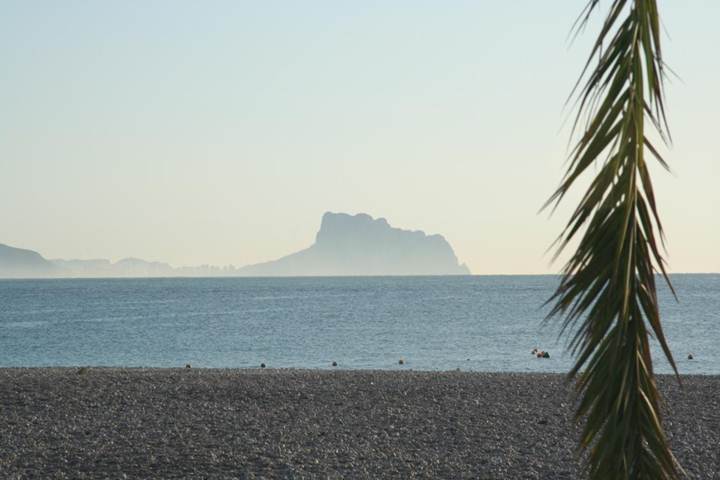
|
|
|
|
Mediterranean living
|
Styles, colours and beauty of living alongside the Mediterranean. The good life…

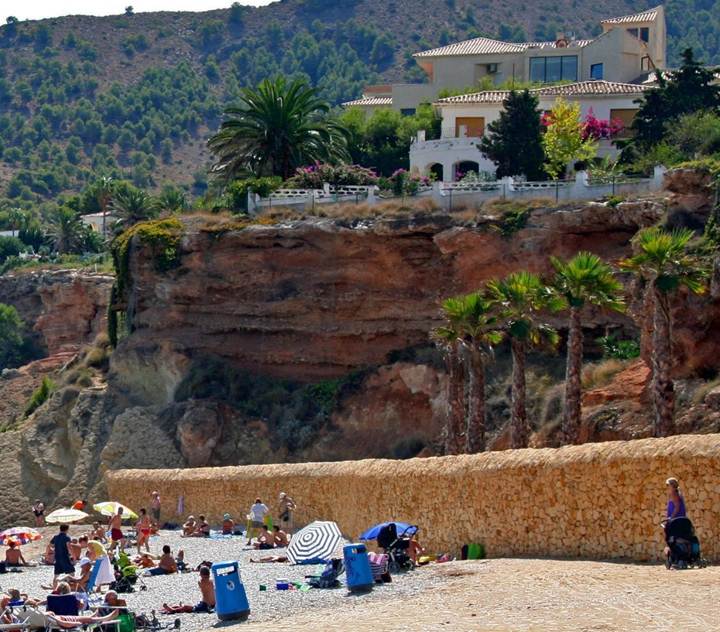

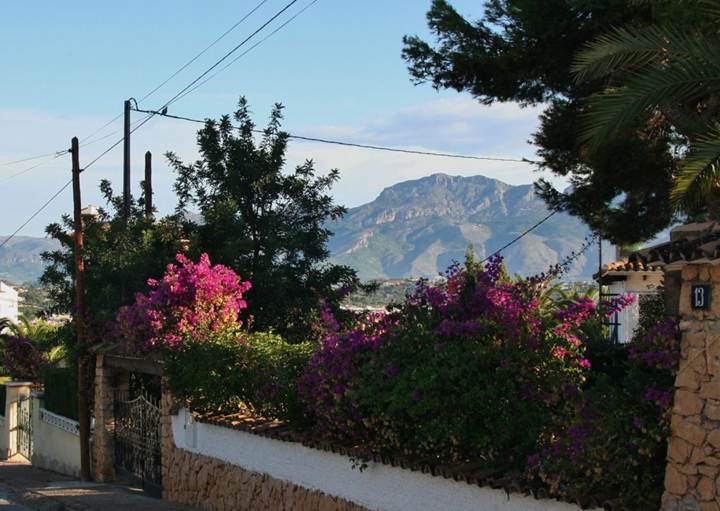



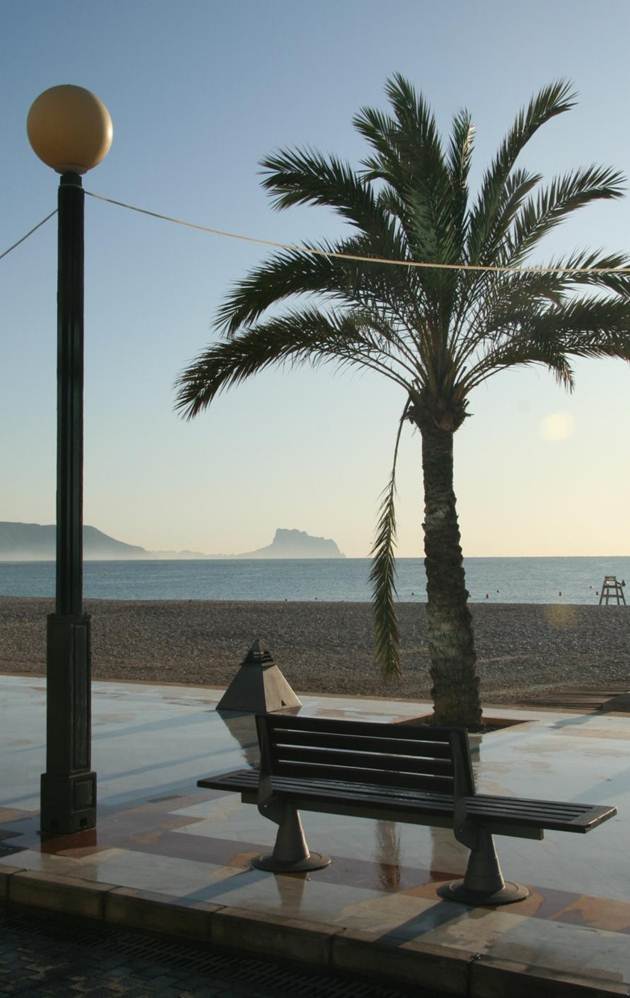
|
|
|
|
Mediterranean food & wines |
The idea of the ‘standard Mediterranean’ ... is a modern construction of food writers and publicists in Western Europe and North America earnestly preaching what is now thought to be a healthy diet to their audiences by invoking a stereotype of the healthy other on the shores of the Mediterranean. Their colleagues in Mediterranean countries are only too willing to perpetuate this myth. The fact of the matter is that the Mediterranean contains varied cultures...
Around 1975, under the impulse of one of those new nutritional directives by which good cooking is too often influenced, the Americans discovered the so-called Mediterranean diet.... The name... even pleased Italian government officials, who made one modification: changing from diet—a word which has always seemed punitive and therefore unpleasant—to Mediterranean cuisine.
Despite this, given the geography, these nation-states have influenced each other over time in both food and culture and the cooking evolved into sharing common principles. Mediterranean cuisine is characterized by its flexibility, its range of ingredients and its many regional variations. The terrain has tended to favour the raising of goats and sheep.
Fish dishes are also common, although today much of the fish is imported since the fisheries of the Mediterranean are weak. Seafood is still prominent in many of the standard recipes.
Olive oil and garlic are widely used in Mediterranean cuisine. It is widely believed that Mediterranean cuisine is particularly healthful; see Mediterranean diet.
Grilled meats, pita bread, hummus, and falafel are very popular forms of the eastern type of the cuisine.
Spain also makes paella, which is rice and mussels or other types of seafood.
|
Paella Paella is an internationally-known rice dish from Spain. It originated in the fields of a region called Valencia in eastern Spain. Today paella is made in every region of Spain, using just about any kind of ingredient that goes well with rice. There are as many versions of paella as there are cooks. It may contain chicken, pork, shellfish, fish, eel, squid, beans, peas, artichokes or peppers. Saffron, the spice that also turns the rice a wonderful golden color is an essential part of the dish.
|
|
A good fish meal in Spain or Italy is often made in Lithuania
Every day, all year round, a truck drives out from the Espersen fish processing plant in the Klaipeda Free Economic Zone, fully loaded with over 20 tonnes of finished fish fillets for the south and west European markets. Not many days later, these fish products are to be found at a restaurant table in Spain, Italy and Greece as delicious dishes prepared by chefs who so often are amazing fish experts and know to appreciate the wonderful ingredients the Baltic Sea and Arctic Ocean have to offer. Because it is from these seas Espersen Lietuva gets its fish raw material, roughly 40 tonnes per day. About 50% of the fish they purchase from the Baltic countries Lithuania, Latvia, Sweden and Denmark, while the remaining half is purchased from Norway, caught in northern Atlantic waters. Some of the fish is purchased fresh, some frozen. Fish products from the plant are eaten at present by people in the UK, Germany, France, Portugal, Spain, Italy and Greece.
|
Riviera wines
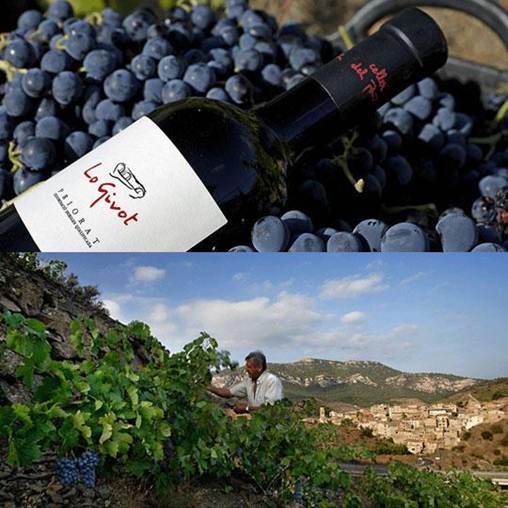
One of the key elements in the Mediterranean diet -- along with olive oil and bread --
is wine. Wherever the Greeks and later the Romans went in their efforts to conquer the
Mediterranean world, they took along wine and the grapes to produce it.
Even in recent years, wine has continued to play a strong dietary role. Ancel and Margaret Keys, in their 1975 book ``How to Eat Well & Stay Well The Mediterranean Way,'' write: ``... the use of wine at every main meal and as an aperitif now and then means that the average man gets close to 10 percent of his daily calories from alcohol.''
In the south of France, a radical change in direction has led to the planting of classy varietals such as chardonnay, merlot and cabernet in the Languedoc-Roussillon region that stretches along the Mediterranean shore west of the Rhone toward the border with Spain. Many wine shops and restaurant wine lists now carry wines from one or more small producers in the region and two large-scale efforts are producing wines of exceptional value. Look for Fortant de France or Reserve St. Martin, both of which offer cabernet sauvignon, merlot, chardonnay, sauvignon blanc, viognier and syrah.
In Provence, if we include the southern Rhone Valley, a vast selection of red wine ranges from the pricey estate wines of Chateauneuf-du-Pape to small producer and cooperative wines from various ``Cotes'' or ``Coteaux'' appellations with names such as Ventoux, Luberon, Provence, Aix-en-Provence, Baronnies and Rhone or Rhone-Villages. Among the most dependable and widely circulated wines from this area are those from La Vieille Ferme.
Crossing into Italy, one sees a good deal of white Gavi and red Cinqueterre on the Italian Riviera. Wines made to the south, along the west coast, may have charm but most are too ephemeral to export. The white wines of Orvieto are an exception, but the reds don't shine until we reach the southern peninsula. There, in Campania, the aglianico grape makes superior reds and the white fiano and greco di tufo wines stand out. The region's outstanding producer is Mastroberardino, whose labels include Lacryma Christi and Taurasi. In Apulia, to the east, grapes such as primativo, negroamaro and malvasia nera make dark, fruity wines, all too often robbed of character by overcropping. The outstanding red of Basilicata, Aglianico del Vulture, is worth seeking out, however. Most of Calabria's wine is drunk there, but Sicily exports considerable wine to the United States, most notably Corvo.
In Spain, the most important region facing the Mediterranean, is the Penedes in Catalonia. It is the center of the country's sparkling wine industry and also produces very serviceable reds, whites and roses. The region's leading producer of still wines is Torres. To the south, inland from Alicante, some good wines are coming from vineyards at Jumilla.
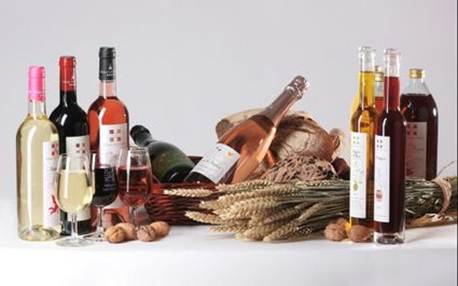
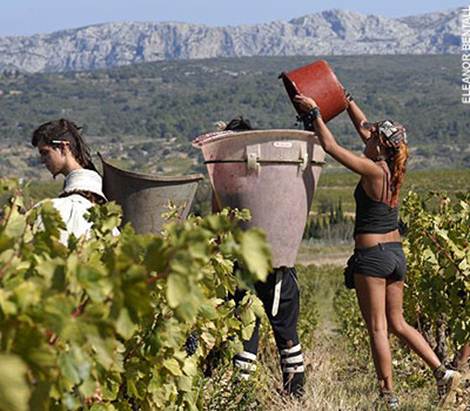

Languedoc - Roussillon wine, including the vin de pays labeled Vin de Pays d'Oc, is produced in southern France. While "Languedoc" can refer to a specific historic region of France and Northern Catalonia, usage since the 20th century (especially in the context of wine) has primarily referred to the northern part of the Languedoc-Roussillon région of France, an area which spans the Mediterranean coastline from the French border with Spain to the region of Provence. The area has around 700,000 acres (2,800 km2) under vines and is the single biggest wine-producing region in the world, being responsible for more than a third of France's total wine production.
As recently as 2001, the region produced more wine than the entire United States.
- Bookmark :
- Digg
- del.icio.us
- Stumbleupon
- Redit it
- Posted by - (5) Comment
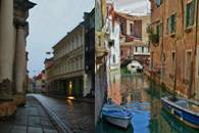
Vilnius and Venice
are my favourite
European citites!
Dear VilNews Readers,
I hope you find interest in my 'travel reports' from around Europe, which I now present in VilNews. The letters and photos are based on my 40 years of travelling around in 'My Europe', always with camera and notepad ready…
As an architect, it is natural for me to focus on architecture as a backdrop for my letters, but for some places architecture is the very main thing, as is the case for my two favourite cities, Vilnius and Venice...
You can read more about Venice in my travel report at
https://vilnews.com/?p=19259
and about my dear Vilnius at
https://vilnews.com/?p=12117
Kind Regards,
Aage Myhre, Editor-in-Chief
Forum
Vijole Arbas
I am simply surprised you have left out Kaunas -- the architecture there surpasses all.
Aage Myhre
The architecture of Kaunas is much, much younger than the one in Vilnius, Vijole. Nevertheless, someone should write about the interwar architecture in Kaunas. Lithuanian functionalism as seen only in the Laisves Avenue ...
Vijole Arbas
True, Aage. I just had to put in a word for my beloved city. I always believed architecture reflected how people live day in and day out, how their thinking patterns are affected, how the people worship (or don't) God. Well -- it is a discussion on its own.
Aage Myhre
Well said, Vijole Arbas
Wyman Brent
Aage, I do indded like your travel posts. I look forward to the day when we can meet again and discuss travel and architecture.
Susan Lucas Kazenas
I have enjoyed your travel reports....thank you for sharing!
- Bookmark :
- Digg
- del.icio.us
- Stumbleupon
- Redit it
- Posted by - (0) Comment
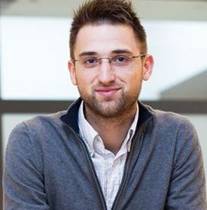
Lithuanian in Copenhagen: Expat community helps business go more smoothly
Despite all the efforts to integrate Europe into one single market, divisions between national markets persist - of cultural nature at least. It is hardly surprising that when Lithuanian entrepreneurs find themselves doing business in a foreign land, they seek help of their compatriots.
Read more...
- Bookmark :
- Digg
- del.icio.us
- Stumbleupon
- Redit it
- Posted by - (0) Comment
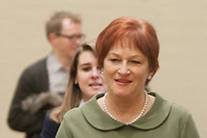
Lithuania's Economy Minister sees no conflict of private-public interests in her actions and plans to stay on
Lithuania's Economy Minister Birutė Vėsaitė says she did not get into a conflict of private and public interests by flying to a business forum in Kazakhstan on an eight-seat business-class airplane chartered by Arvi company.
Read more...
- Bookmark :
- Digg
- del.icio.us
- Stumbleupon
- Redit it
- Posted by - (0) Comment
![]()
EXPLORING EUROPE (2 of 10)
Switzerland & Italy
Tour guide, writer and photographer:
Editor-in-Chief Aage Myhre aage.myhre@VilNews.com
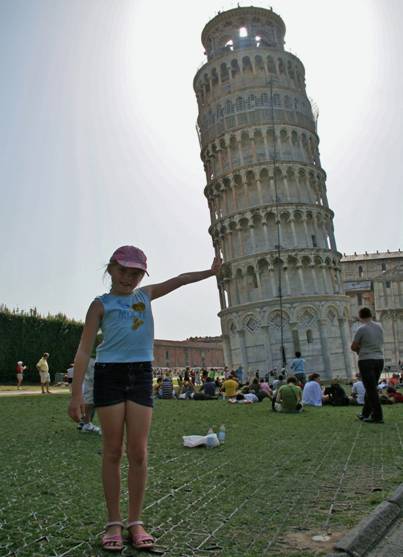
My daughter Cassandra tries, unsuccessfully,
to fix the leaning tower of Pisa, Italy.
Today we start our little tour of Europe. Over the next few weeks, I invite you on a journey from north to south, from east to west. Some sections will dwell with history. Some with Lithuanian contact points in various countries. I have travelled across here with camera and notepad for nearly 40 years, and hope you will enjoy seeing and reading about some of my experiences. We start today's tour in Switzerland, and then continue to the south of Italy.
Go to our SECTION 11 to read more…
- Bookmark :
- Digg
- del.icio.us
- Stumbleupon
- Redit it
- Posted by - (0) Comment
EXPLORING EUROPE (2 of 10)
Venice shows me that architecture
first of all is about life
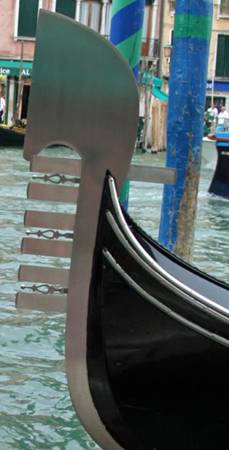 Venice is a perfectly beautiful city. The smells, the sounds, the narrow alleys, canals, bridges. Places suddenly, often unexpectedly, opens as you go. The music, The gondoliers’ songs, vaparettos, taxi boats. I feel well. It is as if I'm in the middle of the very architectural being.
Venice is a perfectly beautiful city. The smells, the sounds, the narrow alleys, canals, bridges. Places suddenly, often unexpectedly, opens as you go. The music, The gondoliers’ songs, vaparettos, taxi boats. I feel well. It is as if I'm in the middle of the very architectural being.
I was once one of many who believed that architecture is primarily about buildings. Venice shows me that architecture first of all is about life. Our human life. How it is the architecture which gives us the framework and background for how best to walk, sit, eat, sleep, work, meet with others, experience beauty.
I understand that the spaces between buildings are as important as the houses themselves. That the widths, heights, depths and connections between everything we surround ourselves with are important. The relationship between them. Interaction. Venice makes me feel that the physical is in total harmony with life itself. Also the spiritual.
It is as if the body, intellect and spirituality converge. I feel an intense happiness. Maybe this town is the world's leading symbol of what an architect should strive to achieve in his work. Maybe it has something to teach us about ourselves. About how important it is to think holistically, holistic in the way we plan our environment and our lives.
"A great architect is not made by way of a brain nearly so much as he is made by way of a cultivated, enriched heart," said the famous American architect Frank Lloyd Wright. Venice tells me that he is right. One does not become a good architect, no matter how much knowledge is acquired, without having talent and an inner inspiration that drives one to draw very good environment for real people interacting with each other. Empathy. Synergy. Proximity. Emotions. In a living symbiosis.
“Form follows function - that has been misunderstood. Form and function should be one, joined in a spiritual union,” says Lloyd Wright also. He emphasizes that "Art for art's sake is a philosophy of the well-fed." "Get the habit of analysis -analysis goodwill in time enable synthesis two become your habit of mind. All fine architectural values are human valueselse not valuable," he concludes. Venice is to me proof of that…
Go to our SECTION 11 to read more…
- Bookmark :
- Digg
- del.icio.us
- Stumbleupon
- Redit it
- Posted by - (3) Comment
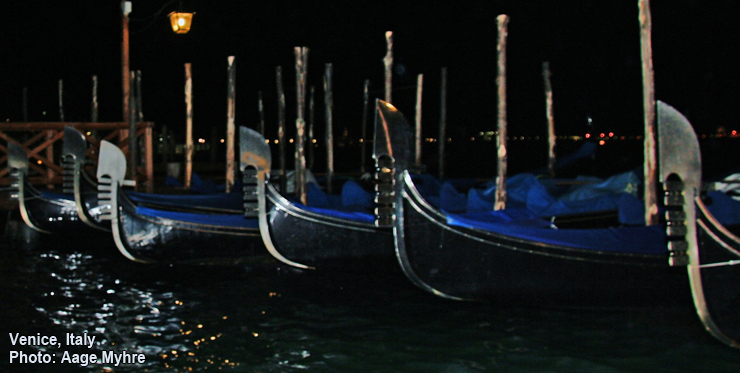
![]()
![]()
EXPLORING EUROPE (2 of 10)
Switzerland & Italy
Today we start our little tour of Europe. Over the next few weeks, I invite you on a journey from north to south, from east to west. Some sections will dwell with history. Some withLithuanian contact points in various countries. I have travelled across here with camera andnotepad for nearly 40 years, and hope you will enjoy seeing and reading about some of my experiences. We start today's tour in Switzerland, and then continue to the south of Italy.
|
|
|
![]()
SWITZERLAND
|
The best known Lithuanian politician in Europea before 1916 I have come south in Switzerland, to the incredibly beautiful Lake Geneva. I sit on the lake bank in the picturesque Montreux town, knowing that only five kilometres from here lived the best-known Lithuanian political figure on the European scene 100 years ago. Juozas Gabrys (1880-1951) was his name. This extraordinarily active personality is today little known in Lithuania and other European countries, like many other thinkers who helped to shape today‘s Europe. Visionaries like Gabrys are often neglected by history, which would not have been the case had they become presidents of their countries. Historians remember Gabrys as the organiser of the four international conferences on Lithuania between 1916 and 1918 in Lausanne and Bern. He bought a farm here in the most romantic area of Switzerland, near the town Vevey five kilometres from where I’m sitting, a region where Victor Hugo, Dostoyevsky, Charlie Chaplain, Nabokov, and others also felt at home. |
|
Vevey is, by the way, the town where Henri Nestlé in 1867 invented his now famous powdered milk and set up a company that was to develop into today‘s number one coffee and chocolate producer worldwide.
But back to Juozas Gabrys. In 1977, Alfred Erich Senn at University of Wisconsin, Madison, wrote a piece about him in the journal Lituanus, stating that Gabrys was a controversial figure in the history of independent Lithuania. He continues: “Since he died in 1951, I never had the opportunity to meet him. In 1957 my father and I visited his widow in Vevey, Switzerland. She received us in friendly fashion, gave me copies of several of his books, and even presented me with a file of five issues of Gabrys' newspaper, la Lituanie Independante.
On the other hand, she would not permit me to search through his papers. She looked through several files herself and insisted that the documents were too personal to turn over to me. Unfortunately, after her death, most of the archive was destroyed. Dr. Albertas Gerutis managed to save Gabrys' manuscript memoirs, "Tėvynės sargyboj," but the rest was lost. As a result, documentation of his career has to come from other sources.
Gabrys was undoubtedly the best known Lithuanian political figure on the European scene before 1916. He had been very active in Paris for several years, and he had established a number of friendships in French intellectual circles. He published memoirs, which appeared in French in 1920, described this phase of his work in detail, but one has to turn to his unpublished memoirs, now in Dr. Gerutis' possession, to get a clearer picture of his career after 1916 when he had begun to work with the Germans.
On August 1, 1919, Gabrys published the first issue of his newspaper La Lituanie Independante, which was aimed at discrediting Provisional Government in Kaunas. In the lead article, entitled "Our Aim," Gabrys proclaimed his desire to seek Lithuanian independence on good terms with all its neighbors. The keynote of the issue was his demand for the election of a Constituent Assembly. A report on the "Present situation in Lithuania" criticized the government as lacking "any support worthy of the name." Completing the first page was the text of an open letter to President Smetona, written in May, declaring that the government feared facing elected representatives of the people.
The issue continued with a "letter from Lithuania," decrying the power of German officials in the country and denouncing the subservience of the "Smetona clique." An anonymous report on "mass discontent in Lithuania" told of moves by the government against Vincas Bartuška and others of Gabrys' friends, and it declared that meetings of Lithuanian patriots were endorsing the sentiments of Gabrys' open letter to Smetona.
Read more at http://www.lituanus.org/1977/77_1_02.htm
|
|
Winter carnival For many, Switzerland is probably more known as a winter wonderland than a summer destination. This is the country Lithuanians and many others prefer when they go on a ski holiday. One of my good winter experiences here took place some years ago when I celebrated 'Fasching (winter carnival)' in an inn outside the capital, Bern, in a half timbered ‘gasthaus’ with a large open fireplace, packed with partying Swiss this evening. All dressed in their national leather and homespun suits. High humidity. Much beer and powerful, heavy food. Switzerland is good in so many ways. Every season! |

Montreux is beautiful!

A stroll along the impressive lakeside promenade in Montreux at Lake Geneva.
![]()
ITALY
Management for Presidents. Villa d’Este, Lace Como, at the Swiss-Italian border
I prefer classical architecture. Modern buildings in glass and steel rarely appeal to me. I see them as cold, sometimes almost hostile. The Renaissance style is the one I admire most. This I understood already in my school years, when I sat up three days and nights to write an essay about Michelangelo. The man and his work was simply so fascinating that I could not sleep.
Italian Michelangelo di Lodovico Buonarroti Simoni (1475 - 1564), commonly known as Michelangelo, was the very 'renaissance guru'; a painter, sculptor, architect, poet and engineer. Only Leonardo da Vinci can be compared. Strange, by the way, that so many of the contemporary geniuses of those days were multi-talented.
During my years as a business leader in Trondheim, Norway, I used some time to read about leadership and management. The course ended in May-June a year in the mid 1980s, and I set my course for Villa d'Este on Lake Como in northern Italy. I was going on one week's final course: 'Management Course for Presidents, a Concentrated program of study in professional management for chief executives.'
We were three persons from Trondheim arriving at Linate Airport in Milan that late May evening. Soon I was sitting behind the wheel of a rented car, a blue-black Lancia Gamma. On the motorway we were met by heavy lightning and thunder, the rain pouring. Police cars with flashing blue lights driving slowly on the highways around Milan to get other cars to take it easy. Not always easy in Italy... The weather improved when we an hour later, following the winding mountain roads, approached the hotel on Lake Como. Soon we come to a guard shelter with a turnpike. The guard checked our booking information, and not long after we parked outside one of the world's most beautiful hotels - in an incredibly stunning setting on the hillside above the lake. Later I was told that the reason for placing the guard a full mile before reaching the hotel, was that business people from Milan should be notified in time to get hidden mistresses away in case the wives came for a hotel visit...
Villa d'Este was originally a privately Renaissance palace, built in the 1500s, since 1873 a luxury hotel. We were here for a week, going through a busy course agenda and enjoying nature, luxury, in one of the world's most scenic areas.

The Renaissance Palace Villa d'Este on Lake Como, between Italy and Switzerland,
is one of the world's finest hotels.
Foto: Italianvisits.com
Pisa, Central Italy


The leaning tower of Pisa.
Pisa is a city in Tuscany, Central Italy, on the right bank of the mouth of the River Arno on the Tyrrhenian Sea. It is the capital city of the Province of Pisa. Although Pisa is known worldwide for its Leaning Tower (the bell tower of the city's cathedral), the city of over88,332 residents (around 200,000 with the metropolitan area) contains more than 20other historic churches, several palaces and various bridges across the River Arno .
The city is also home of the University of Pisa, wooden has a history going back to the12th century and also has the mythic Napoleonic Scuola Normale Superiore di Pisa and Sant'Anna School of Advanced Studies as the best Superior Graduate Schools in Italy.
|
The three Renaissance Capitals of the World!
Did you know that throughout the Renaissance period, when Italy was a trading centre and a melting pot for the world’s greatest civilisations, Vilnius also became a Renaissance centre, competing with Florence and Milan? The two great nations merged when Grand Duke Sigismund the Old (1467-1548) married the Princess of the Italian city of Milan, Bona Sforza, and returned to reign in and from Vilnius as the capital of the Grand Duchy of Lithuania. The royal couple created an Italian community within the court and, under the influence of the new Grand Duchess, Italian culture became the preoccupation of the Lithuanian’ elite. This was at a time when Lithuania was Europe’s largest nation, stretching from the Baltic Sea to the Black Sea. See https://vilnews.com/?p=326
|
District of Tuscany – city of Florence



The Basilica di Santa Maria del Fiore (English: Basilica of Saint Mary of the Flower) is the cathedral church of Florence. The Duomo, as it is ordinarily called, was begun in 1296 in the Gothic style to the design of Arnolfo di Cambio and completed structurally in 1436 with the dome engineered by Filippo Brunelleschi. The exterior of the basilica is faced with polychrome marble panels in various shades of green and pink bordered by white and has an elaborate 19th century Gothic Revival façade by Emilio De Fabris.

The Palazzo Medici, also called the Palazzo Medici Riccardi after the later family that acquired and expanded it, is a Renaissance palace located in Florence. The palace was designed by Michelozzo di Bartolomeo for Cosimo de' Medici, head of the Medici banking family, and was built between 1445 and 1460. The House of Medici or Famiglia de' Medici was a political dynasty, banking family and later royal house that first began to gather prominence under Cosimo de' Medici in the Republic of Florence during the late 14th century. The family originated in the Mugello region of the Tuscan countryside, gradually rising until they were able to found the Medici Bank. The bank was the largest in Europe during the 15th century.

The Ponte Vecchio ("Old Bridge") is a Medieval stone closed-spandrel segmental arch bridge over the Arno River, in Florence, noted for still having shops built along it, as was once common. Butchers initially occupied the shops; the present tenants are jewellers, art dealers and souvenir sellers. A curious fact regarding the words bank and bankruptcy is that they derive from the economic activity on Ponte Vecchio. The stand, or table, that held the merchants goods was called a "banco" (“bench”). When a merchant was no longer able to pay his taxes, his banco was literally broken or "rotto" into pieces, therefore creating the term "bancorotto" which translated into the word "bankruptcy" in English.
A room with no view

A Room with a View is a 1908 novel by the English writer E. M. Forster, about a young woman in the repressed culture of Edwardian England. Set in Florence and England, the story is both a romance and a critique of English society at the beginning of the 20th century. Merchant-Ivory produced an award-winning film adaptation in 1985. Our hotel room in Florence faced a house wall, a room with no view, but my daughter Cassandra was able to take reading light.

When in Rome, do as the Romans do
Rome is the capital of Italy and the country's largest and most populated city and commune, with over 2.7 million residents. The city is located in the central-western portion of the Italian Peninsula, on the Tiber River within the Lazio region of Italy. Rome's history spans two and a half thousand years. It was the capital city of the Roman Kingdom, the Roman Republic and the Roman Empire, which was the dominant power in Western Europe and the lands bordering the Mediterranean for over seven hundred years from the 1st century BC until the 7th century AD. Since the 1st century AD Rome has been the seat of the Papacy and, after the end of Byzantine domination, in the 8th century it became the capital of the Papal States, which lasted until 1870. In 1871 Rome became the capital of the Kingdom of Italy, and in 1946 that of the Italian Republic.

The Trevi Fountain is a fountain in the Trevi district in Rome, Italy. Standing 26 metres (85.3 feet)
high and 20 metres (65.6 feet) wide, it is the largest Baroque fountain in the city and one
of the most famous fountains in the world.

The Colosseum, originally the Flavian Amphitheatre, is an elliptical amphitheatre in the centre of the city of Rome, the largest ever built in the Roman Empire. It is considered one of the greatest works of Roman architecture and Roman engineering. Occupying a site just east of the Roman Forum, its construction started in 72 AD under the emperor Vespasian and was completed in 80 AD under Titus, with further modifications being made during Domitian's reign (81–96). The name "Amphitheatrum Flavium" derives from both Vespasian's and Titus's family name (Flavius, from the gens Flavia).Capable of seating 50,000 spectators, the Colosseum was used for gladiatorial contests and public spectacles such as mock sea battles, animal hunts, executions, re-enactments of famous battles, and dramas based on Classical mythology. The building ceased to be used for entertainment in the early medieval era. It was later reused for such purposes as housing, workshops, quarters for a religious order, a fortress, a quarry, and a Christian shrine.


One of many fantastic nights in Rome. My kids simply loved them.
Gargano, South Italy, has the best beaches of the Mediterranean Sea!

Gargano is a historical and geographical Italian sub-region situated in Apulia, consisting of a wide isolated mountain massif made of highland and several peaks and forming the backbone of the Gargano Promontory projecting into the Adriatic Sea. The high point is Monte Calvo at 1,065 m (3,494 ft). Most of the upland area, about 1,200 km2 (460 sq mi), is part of the Gargano National park, founded in 1991. It is within the Italian Province of Foggia. My good friends are running a motel & camping close to the Adriatic Sea. A paradise for travellers!

The coast of Gargano is rich in beaches and tourist facilities. Vieste, Peschici and Mattinata are world-wide-famous seaside resort locations. The two major salt lakes of Lesina and Varano are located in the northern part of the peninsula. Monte Gargano is the site of the oldest shrine in Western Europe dedicated to the archangel Michael, Monte Sant'Angelo sul Gargano. Today tourism is thriving with several hotels and campsites, in particular along the seaside of Marina of Lesina, give the possibility of staying in this suggestive area. Tourist attractions include the cathedral, the episcopal palace, the Abbey of Santa Maria of Ripalta and the volcanic rocks dating back to the Triassic era, known as "Black Stones", as well as the Sanctuary of San Nazario.


|
|

I will always feel gratitude towards the Pacilli family here in Gargano. They have taught me important things about friendship, companionship, food, Italian wine and the joy of a long meal among friends when darkness falls...
|
Santa Claus and Lithuania's Grand Duchess My years in Lithuania and my many visits to Italy have put a different and very special Christmas story onto my lap. Far south in Italy, a little south of Gargano, lies the city of Bari with its Cathedral Basilica di San Nicola, built between1087 and 1197. This church was erected over the remains of St. Nicholas (270-343). His relics were originally stolen from the city of Myra in today's South-west Turkey. When Myra in the 1000s was occupied by the Saracens, the Catholic Church saw this as an opportunity to move the saint's relics to a more friendly place. According to the justifying legend which was created, had the saint himself, |
|
during a voyage from Myra to Rome, arrived at the port of Bari and then selected the city as his burial place. It came to great competition for the relics between Venice and Bari. The latter won and the relics were removed just below the nose of their Greek keepers and their Muslim masters. On 9 May 1087 the remains safely arrived in Bari. A crypt was immediately made for the remains of this important saint, and a new church was started built on top of the crypt. Pope Urban II was present at the consecration of the crypt in 1089. The church, which naturally carried the saint's name, was completed in 1197
460 years pass, and the Lithuanian Grand Duchess Bona Sforza, who is now the widow after Grand Duke Sigismund the Old, comes to Bari gets to collect the debt Spain's King Philip II has to her. Instead of receiving money as agreed, she was poisoned by the Spanish king's envoy and she dies here in Bari in the year 1557. Her sarcophagus was placed in the middle of the church. The Sforza family's role in Bari was very important, and it are no wonder that Bonas sarcophagus in the St. Nicholas Church to this day symbolizes and represents this role in a grand manner.
It was duchess Bona and her mother, Isabella d'Aragona, Princess of Naples, Duchess of Milan and Bari, who had undertaken the construction of the fort here in Bari. The fort still dominates today Bari's old town, but has now turned into a cultural centre in the midst of the imposing defensive bastions. The fort also houses a gallery of plaster casts and temporary exhibits of different character
|
|
So here they lie, St. Nicolas who later became better known as Santa Claus, and Bona Sforza, the grand duchess who was also the mother of the last two representatives of Lithuania's famous Jagailo dynasty, Sigismund Augustus and Anna Jagiellon. With them came the 300-year dynasty of the House of Gediminas to an end, and today the world knows very little about the country that was once Europe's largest, the Grand Duchy of Lithuania. And ironically enough, the relics of the woman who was such a leading symbol of Lithuania's greatness is to be found, not in Lithuania, but here in southern Italy - along with the remains of the symbol of today's Christmas traditions...
|
Venice shows me that architecture first of all is about life
|
|
Venice is a perfectly beautiful city. The smells, the sounds, the narrow alleys, canals, bridges. Place suddenly, often unexpectedly, opens as you go. The music, The gondoliers’ songs, vaparettos, taxi boats. I feel well. It is as if I'm in the middle of the very architectural being. I was once one of many who believed that architecture is primarily about buildings. Venice shows me that architecture first of all is about life. Our human life. How it is the architecture which gives us the framework and background for how best to walk, sit, eat, sleep, work, meet with others, experience beauty. I understand that the spaces between buildings are as important as the houses themselves. That the widths, heights, depths and connections between everything we surround ourselves with are important. The relationship between them. Interaction. Venice makes me feel that the physical is in total harmony with life itself. Also the spiritual. It is as if the body, intellect and spirituality converge. I feel an intense happiness. Maybe this town is the world's leading symbol of what an architect should strive to achieve in his work. Maybe it has something to teach us about ourselves. About how important it is to think holistically, holistic in the way we plan our environment and our lives. "A great architect is not made by way of a brain nearly so much as he is made by way of a cultivated, enriched heart," said the famous American architect Frank Lloyd Wright. Venice tells me that he is right. One does not become a good architect, no matter how much knowledge is acquired, without having talent and an inner inspiration that drives one to draw very good environment for real people interacting with each other. Empathy. Synergy. Proximity. Emotions. In a living symbiosis. |
“Form follows function - that has been misunderstood. Form and function should be one, joined in a spiritual union,” says Llloyd Wright also. He emphasizes that "Art for art's sake is a philosophy of the well-fed." "Get the habit of analysis -analysis goodwill in time enable synthesis two Become your habit of mind. All fine architectural values are human values, else not valuable, "he concludes. Venice is to me proof of that.

Venice taught me to look behind facades. It was here it first dawned on me that it is the human that
is good architecture's true nature. The architect's task is to create inspiring framework that promotes,
does not conflict with or interfere with human activity. I start taking pictures of people
and situations, more than of buildings.
Photo: Aage Myhre, 1974.
|
Venice is an outstanding symbol of life itself...
|
Venice has been known as the "La Dominante", "Serenissima", "Queen of the Adriatic", "City of Water", "City of Masks", "City of Bridges", "The Floating City", and "City of Canals". Luigi Barzini described it in The New York Times as "undoubtedly the most beautiful city built by man". Venice has also been described by the Times Online as being one of Europe's most romantic cities. The city stretches across 117 small islands in the marshy Venetian Lagoon along the Adriatic Sea in northeast Italy. The saltwater lagoon stretches along the shoreline between the mouths of the Po (south) and the Piave (north) Rivers. The Republic of Venice was a major maritime power during the Middle Ages and Renaissance, and a staging area for the Crusades and the Battle of Lepanto, as well as a very important center of commerce (especially silk, grain, and spice) and art in the 13th century up to the end of the 17th century. This made Venice a wealthy city throughout most of its history. It is also known for its several important artistic movements, especially the Renaissance period. Venice has played an important role in the history of symphonic and operatic music, and it is the birthplace of Antonio Vivaldi.













- Bookmark :
- Digg
- del.icio.us
- Stumbleupon
- Redit it
- Posted by - (2) Comment
EXPLORING EUROPE
Tour guide, writer and photographer: Aage Myhre, Editor-in-Chief
aage.myhre@VilNews.com
Click the READ buttons or the article headlines below to access the articles:
- Bookmark :
- Digg
- del.icio.us
- Stumbleupon
- Redit it
- Posted by - (5) Comment
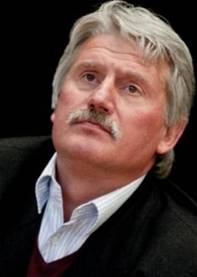
Egidijus Aleksandravičius
(b. 1956) - Lithuanian historian, assistant Ph.D., professor.
New association for Lithuanians living here and abroad?
Dalia Cidzikaite
Too many things that concern us, Lithuanian citizens, are decided not by us but by Lithuanian government, says Egidijus Aleksandravičius. That is why he is proposing to establish an association which will try to know better Lithuanians living abroad. The idea was presented during the seminar at VMU Lithuanian Emigration Institute on May 17, 2013. I am sure we will hear about it more in the future.
Forum
Linas Johansonas Don't we already have an "association" that represents Lithuanians abroad: World Lithuanian Community (Pasaulio Lietuviu Bendruomene)?
Dalia Cidzikaite As far as I can tell, the goal of a new association would be not to represent Lithuanians living abroad, but to know them better.
Vijole Arbas as it is the World Community does not pay taxes to Lithuania, thereby crippling the country. Do we really need to know more?
Linas Johansonas Vijole Arbas: while the world community doesn't pay taxes to Lithuania, it does give Lithuania lots of money via: visiting Lithuania, sending money to family, financially supporting various charity organizations, buying Lithuanian products ....etc.
Jon Platakis Vijole Arbas, I have no idea why you are so divisive when it comes to the world Lithuanian community. As Linas Johansonas so succinctly mentioned, take away our tourism, the money we send, and support of charitable organizations, and Lithuania would re...See More
Algimantė Danilaitė Vijole, some lithuanians in Lithuania does not pay taxes too. I don't care if some of lithuanians lives abroad, it's their personal choice. I really appreciate all the efforts to make Lithuania better country. Jon Platakis well said about working together. Sometimes I feel that some of lithuanians really likes to bite each other.
Vijole Arbas I am weary of the increasing burden. More responsible citizens lightens the load for everyone. I do get angry about that. The World Community demands privileges but does not carry any burden of responsibility.
Boris Bakunas Scolding people is an ineffective way of encouraging them to do what you want. Strong people resent being told what they must do. I believe Lithuanians have proved that during their centuries-long fight for freedom.
Lithuania has signed many conventions with other countries banning double taxation. They are readily available on the internet for anyone wishing to take the trouble of googling the key words "Double Taxation Lithuania."
And why should anybody pay taxes to a government rife with corrupt politicians?
Almost all the Lithuanians I know have been sending money to their Lithuanian relatives since Krushchev allowed correspondence between Lithuanians at home and their families abroad. We thought of many ingenious ways of concealing the money so that it would not be stolen by corrupt postal officials. I won't reveal the methods used, because even today such theft occurs.
Instead of complaining, why not praise the work done by such organizations as Lithuanian Mercy Lift. Praise is a much better teacher than blame.
http://www.lithuanianmercylift.org/
- Bookmark :
- Digg
- del.icio.us
- Stumbleupon
- Redit it
- Posted by - (0) Comment
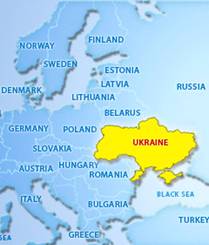
Ukraine takes “active steps” to win the sympathy of Germany
Hopes to have an initial EU Agreement signed at the 28-29 November Eastern Partnership Summit in Vilnius
Ukraine is taking “active steps” to win the sympathy of Germany, the country most strongly opposed to the signature of a landmark association agreement with the EU in the absence of a solution to the imprisonment of former prime minister Yulia Tymoshenko, diplomats told EurActiv this week.
As part of Ukraine’s campaign to win Germany’s sympathies, the country’s deputy Prime Minister Alexander Vilkul visited Berlin on 22-23 May, meeting with senior German officials in an attempt to highlight economic benefits the Association Agreement will bring to Germany and the European Union as a whole.
The association agreement, totalling more than 1,000 pages, was initiated more than a year ago but its signature is awaiting progress on conditions imposed by the EU, including the release from prison of former prime minister Yulia Tymoshenko.
Ukraine hopes to have the Association Agreement signed at the 28-29 November Eastern Partnership summit, held in Vilnius under the Lithuanian EU Presidency.
Lithuania, Estonia and other EU countries favour the signature of the agreement, in spite of the imprisonment of Tymoshenko, arguing that the Union should not lose Ukraine over the fate of one person.
- Bookmark :
- Digg
- del.icio.us
- Stumbleupon
- Redit it
- Posted by - (3) Comment
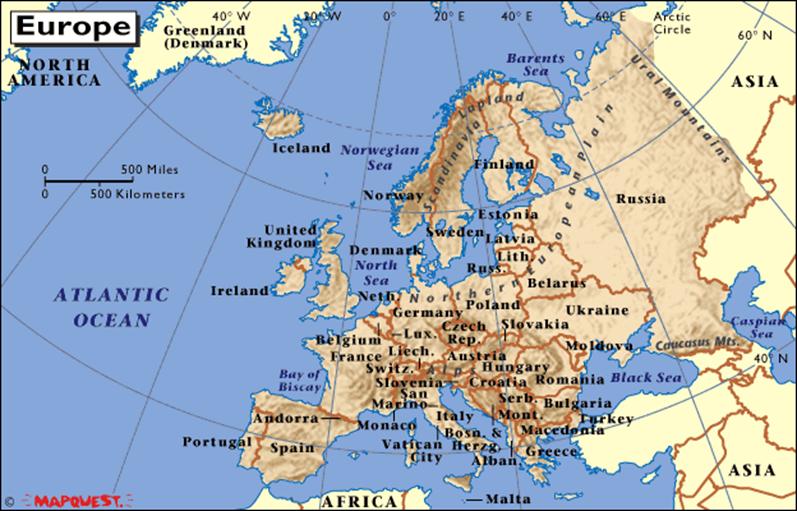
EXPLORING EUROPE
Join me on my journey to 26 European countries!
TOUR GUIDE: Aage Myhre, VilNews editor-in-chief
aage.myhre@VilNews.com

Early morning at Costa Blanca, Spain's White Mediterranean coast.
Text & photos: Aage Myhre, VilNews editor-in-chief
The more I travel around the world the more I realise that I am European. Although I have had good, close friends and have experienced extraordinary things in all corners of the world. Maybe my mind is not sufficiently exotic. That's ok. I have grown older now. Driving a car is the best way to experience Europe. Lithuania's border crossings to Latvia and Poland is no problem anymore. Within a day's drive you can reach most of the northern and central European countries. One more day and you can already stand and look out over the warm, slow waves of the Mediterranean Sea...
Over the next few weeks VilNews will present some glimpses of Europe ... A Europe that is now so close to everyone... The Iron Curtain is gone, forever...
|
1 |
|
Exploring Europe |
|
2 |
|
Switzerland & Italy |
|
3 |
|
Along the Riviera |
|
4 |
|
From Strasbourg to London |
|
5 |
|
Austria & Germany |
|
6 |
|
Finland & Scandinavia |
|
7 |
|
En route Warsaw - Budapest |
|
8 |
|
Moscow and further east |
|
9 |
|
The Baltic Hanseatic route |
|
10 |
|
Istanbul |
1 of 10: Exploring Europe
I love old towns. No matter how good a new suburb is. I, and many with me, prefer the old towns. It has something to do with the atmosphere. Details, ornaments. Human life. Sound and smell. Warmth. Joy.
Europe is the 'old town' of the entire world!
I think it primarily is about culture and history. All that Europe is so infinitely rich on. It is something about that feeling. The idea and the knowledge of the Roman Empire every time I'm in Rome. Recognition every time I visit a museum or gallery and see the many art treasures I feel is a part of my European self.
It is more to Europe I never get tired of. For example, being able to walk, touch, feel, smell. Being a tourist here is like walking on the world stage as it has provided the basis for so much over thousands of years. Fortunately, European leaders long ago realized that the human being is more important than cars. Take
Strøget in Copenhagen, bike paths in Holland and promenades along pretty much all The Mediterranean sea-coast as good examples of this.

Europe means walking around on cobbled streets. Between historic buildings.
To see. Listen. Experience. Feel. Smell. Like here in Florence.

Venice is my favourite European spot...

A stroll along the impressive lakeside promenade in Montreux at Lake Geneva.

Vienna, home of Freud and the Strauss family.

The Renaissance Sukiennice building is the central feature of the Main Market Square in Kraków Old Town.

Turkey’s Mediterranean coast.

Lithuanian President Dalia Grybauskaitė on a two-day state visit to Norway in 2011. The President was officially
welcomed at the Royal Palace, where she met with King Harald V and Queen Sonja of Norway,
Crown Prince Haakon and his wife Crown Princess Mette-Marit, and Princess Astrid.
Photo: www.president.lt
- Bookmark :
- Digg
- del.icio.us
- Stumbleupon
- Redit it
VilNews e-magazine is published in Vilnius, Lithuania. Editor-in-Chief: Mr. Aage Myhre. Inquires to the editors: editor@VilNews.com.
Code of Ethics: See Section 2 – about VilNews. VilNews is not responsible for content on external links/web pages.
HOW TO ADVERTISE IN VILNEWS.
All content is copyrighted © 2011. UAB ‘VilNews’.
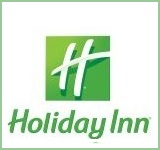
 Click on the buttons to open and read each of VilNews' 18 sub-sections
Click on the buttons to open and read each of VilNews' 18 sub-sections 


























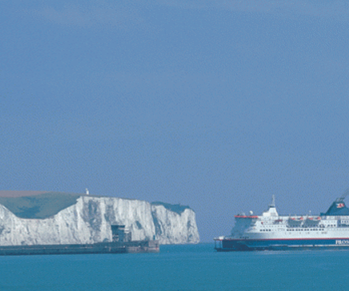










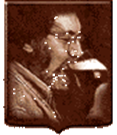


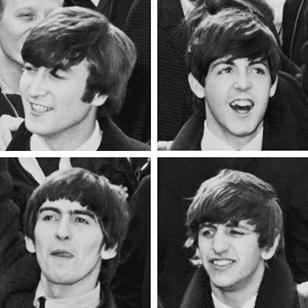
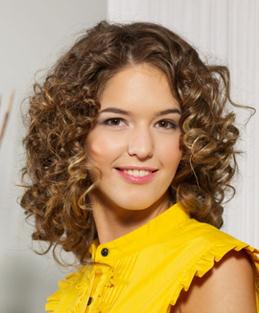




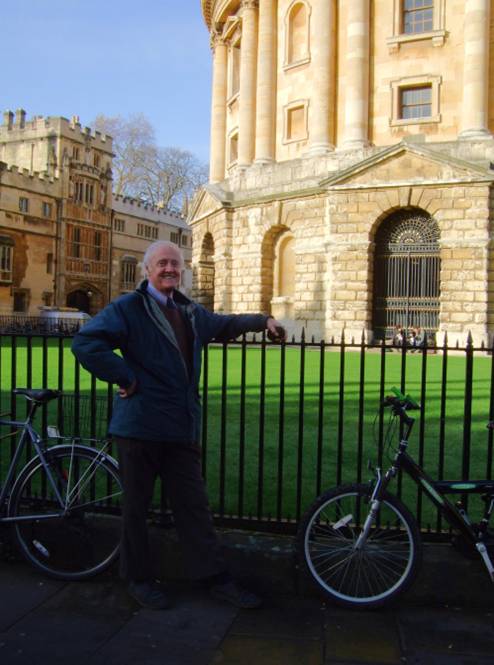



























































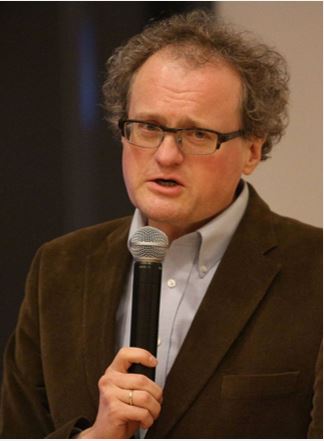
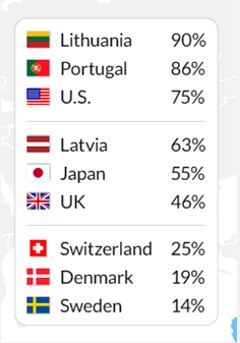
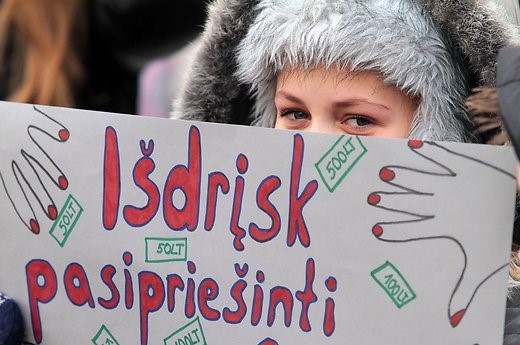
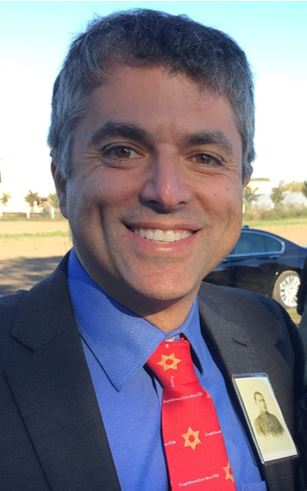
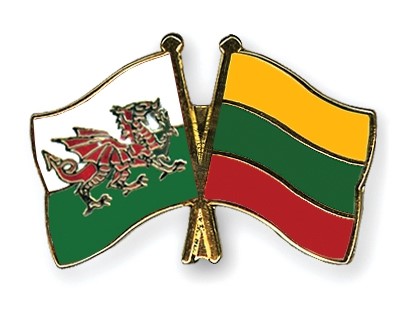
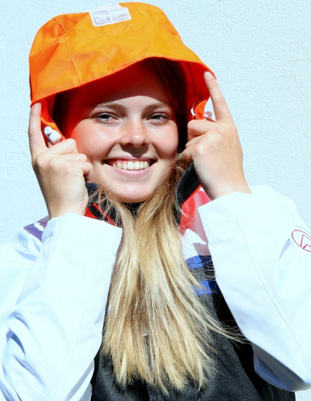
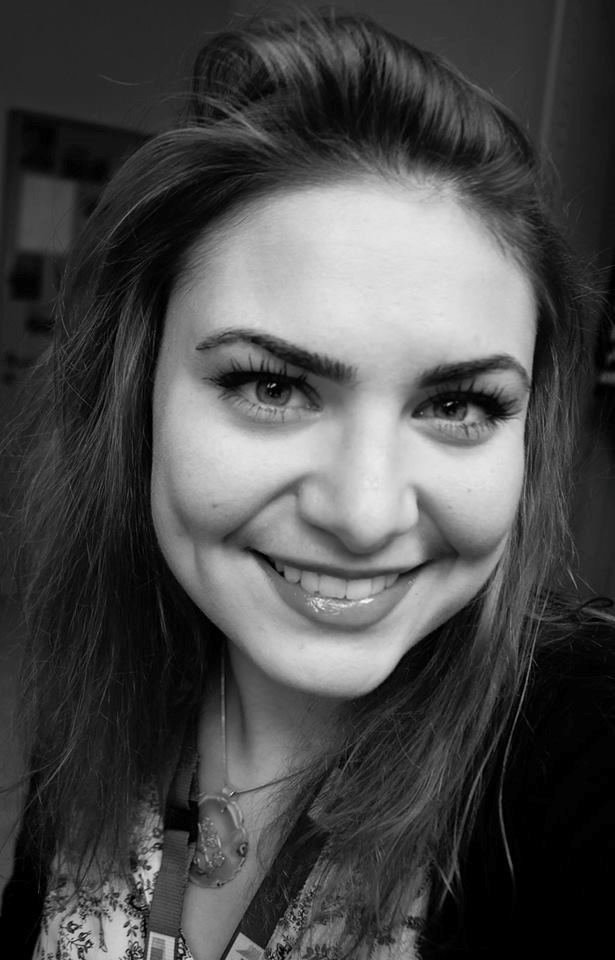
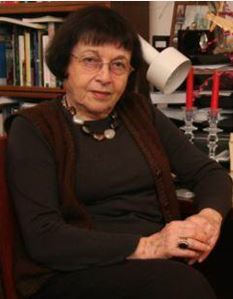
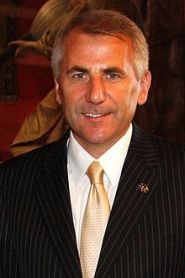
.jpg)
